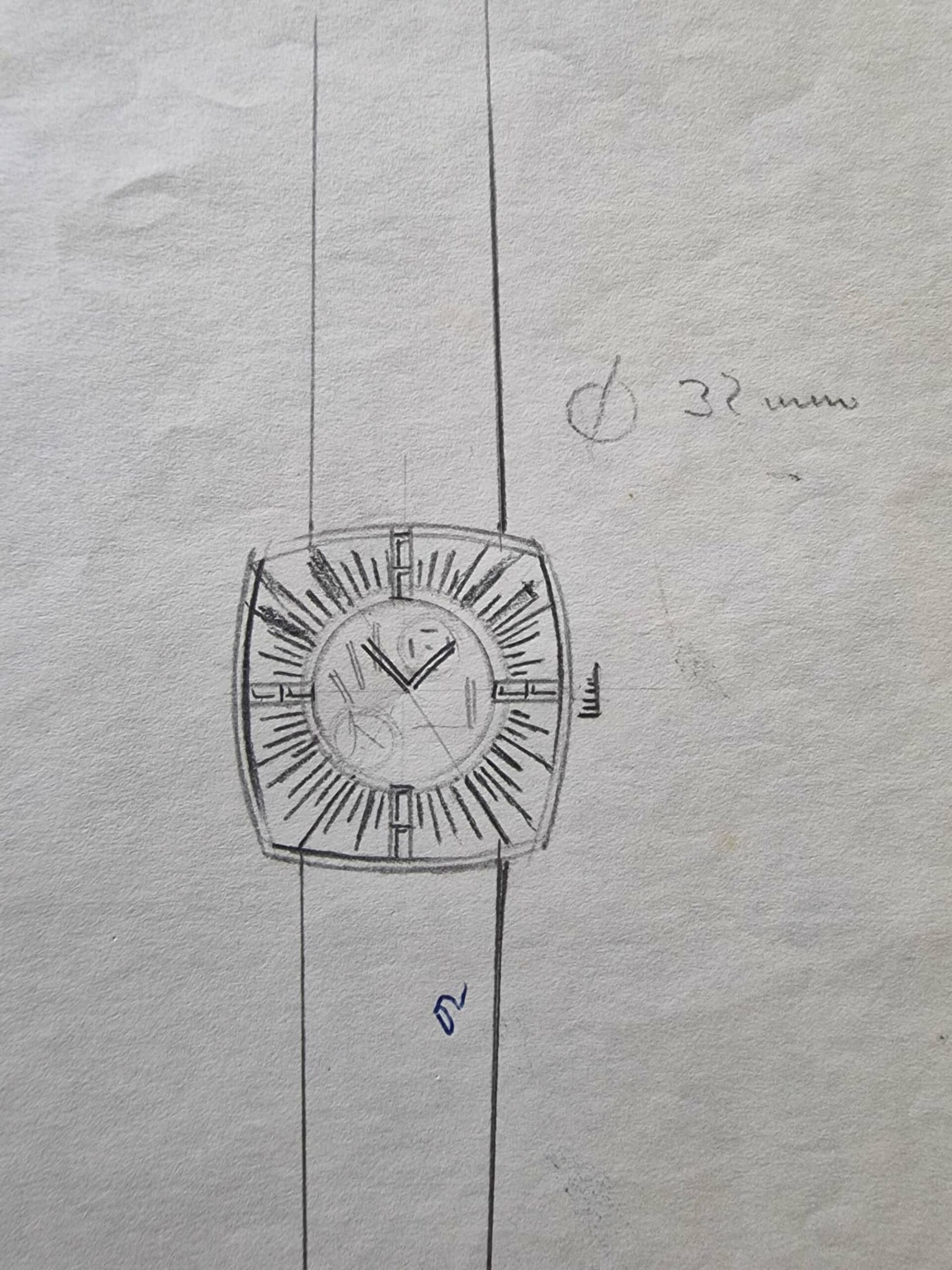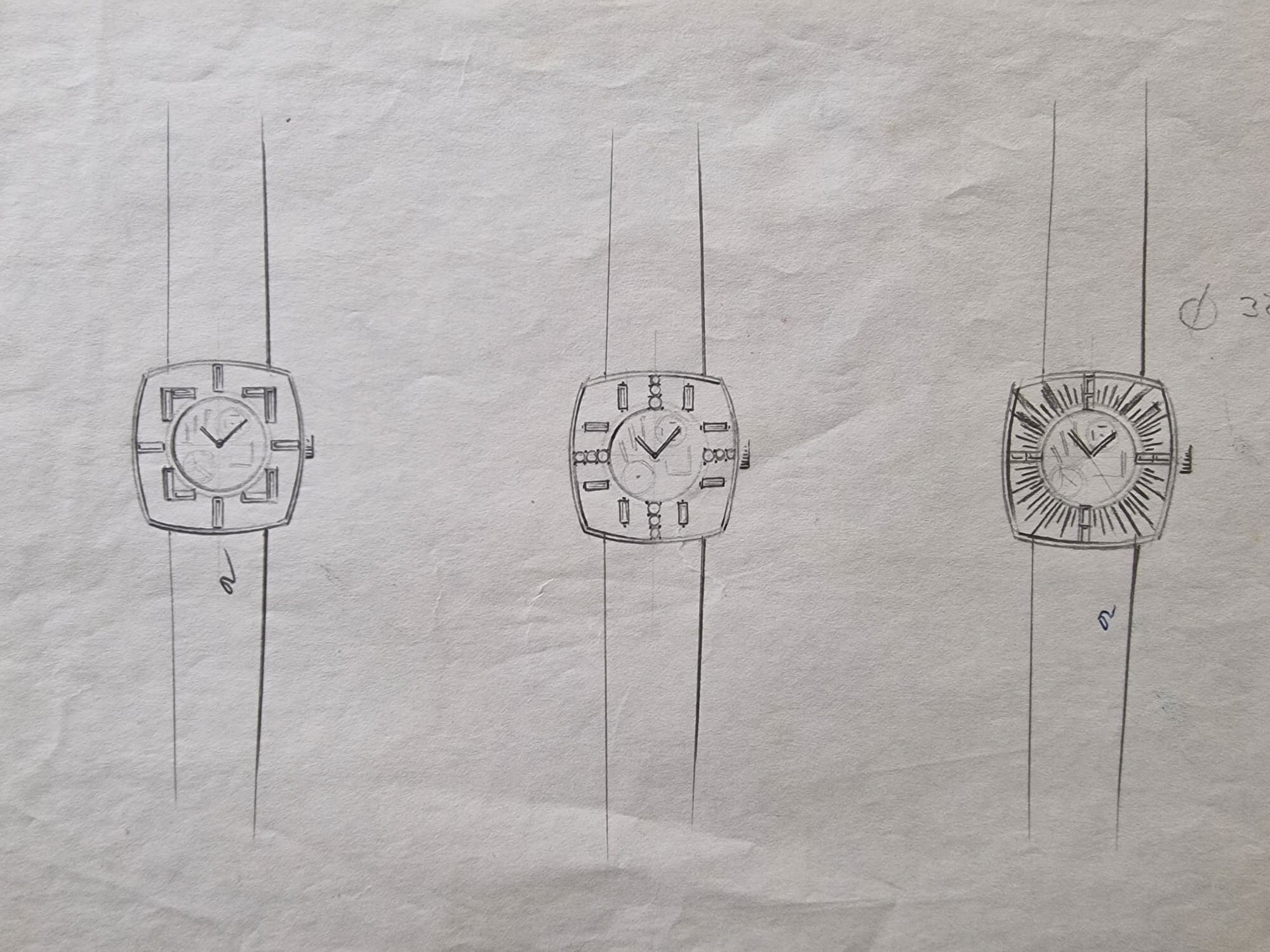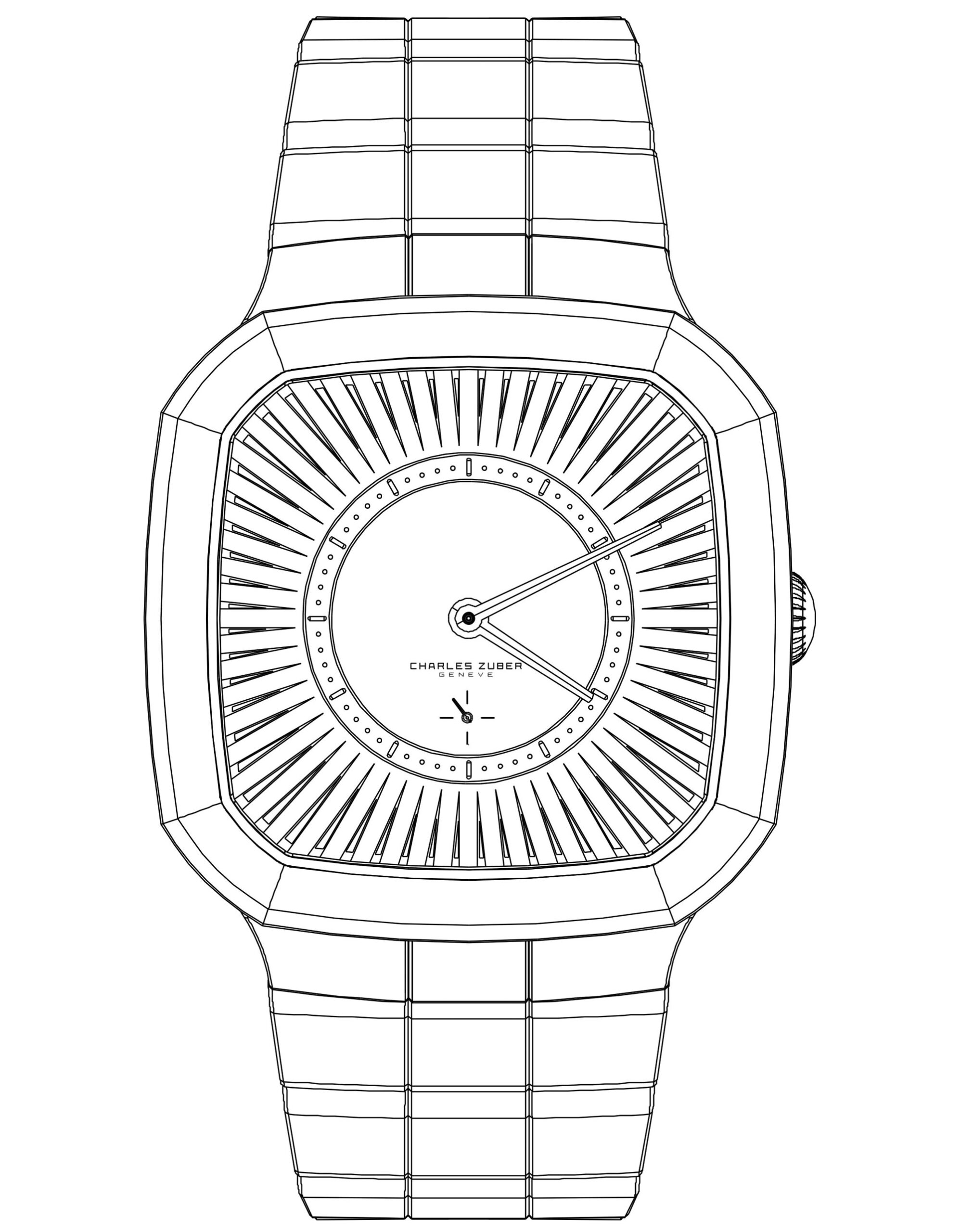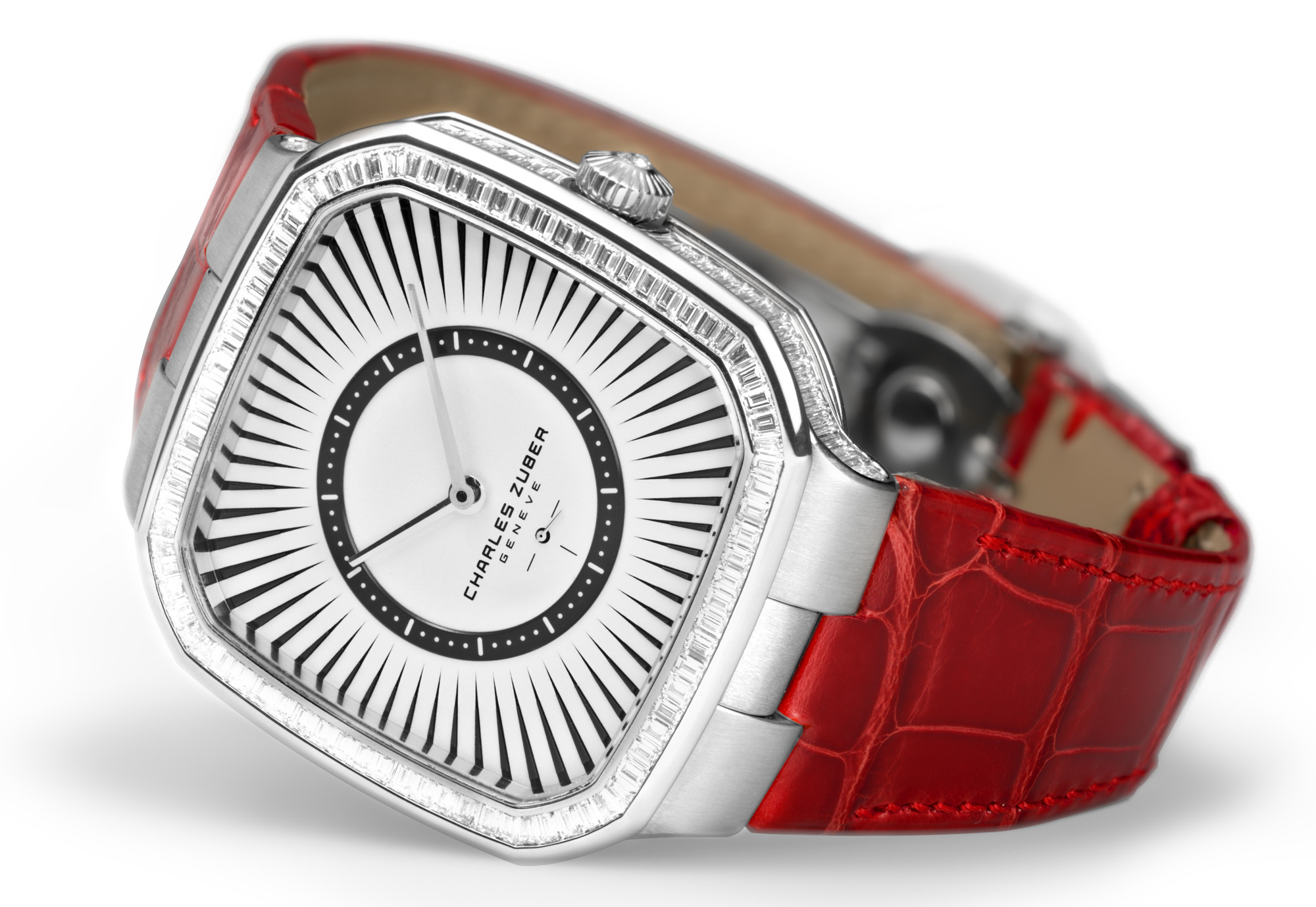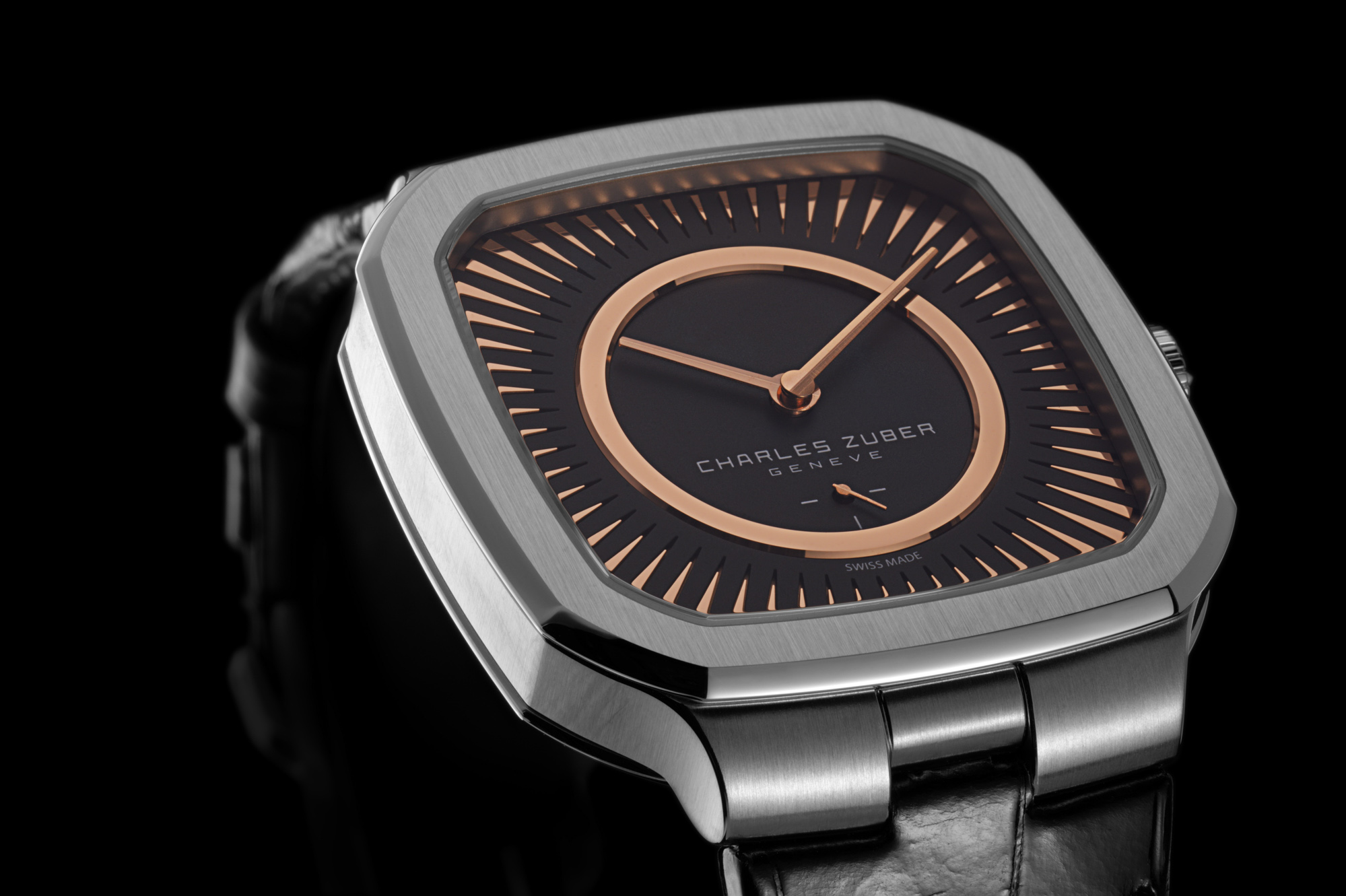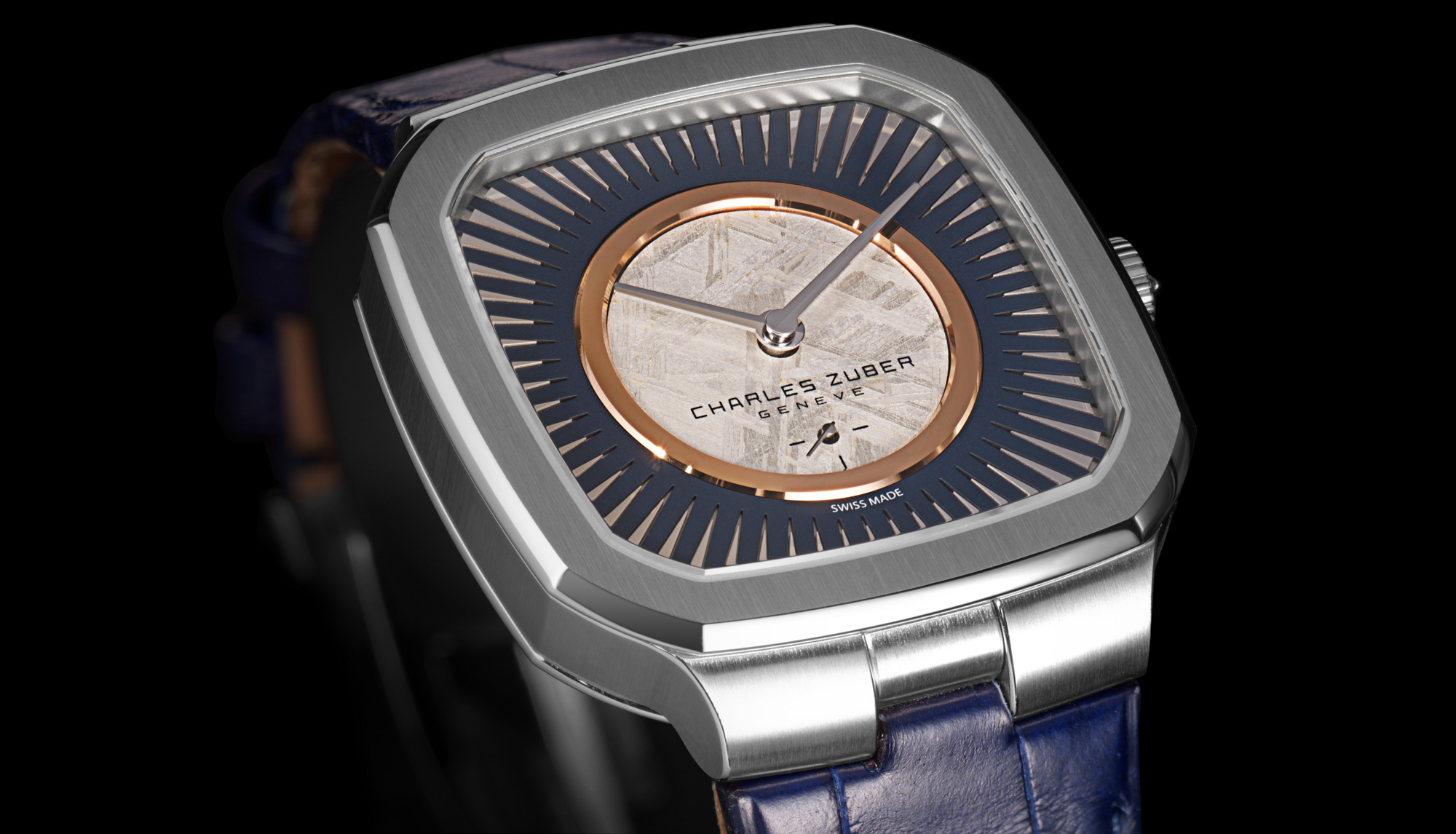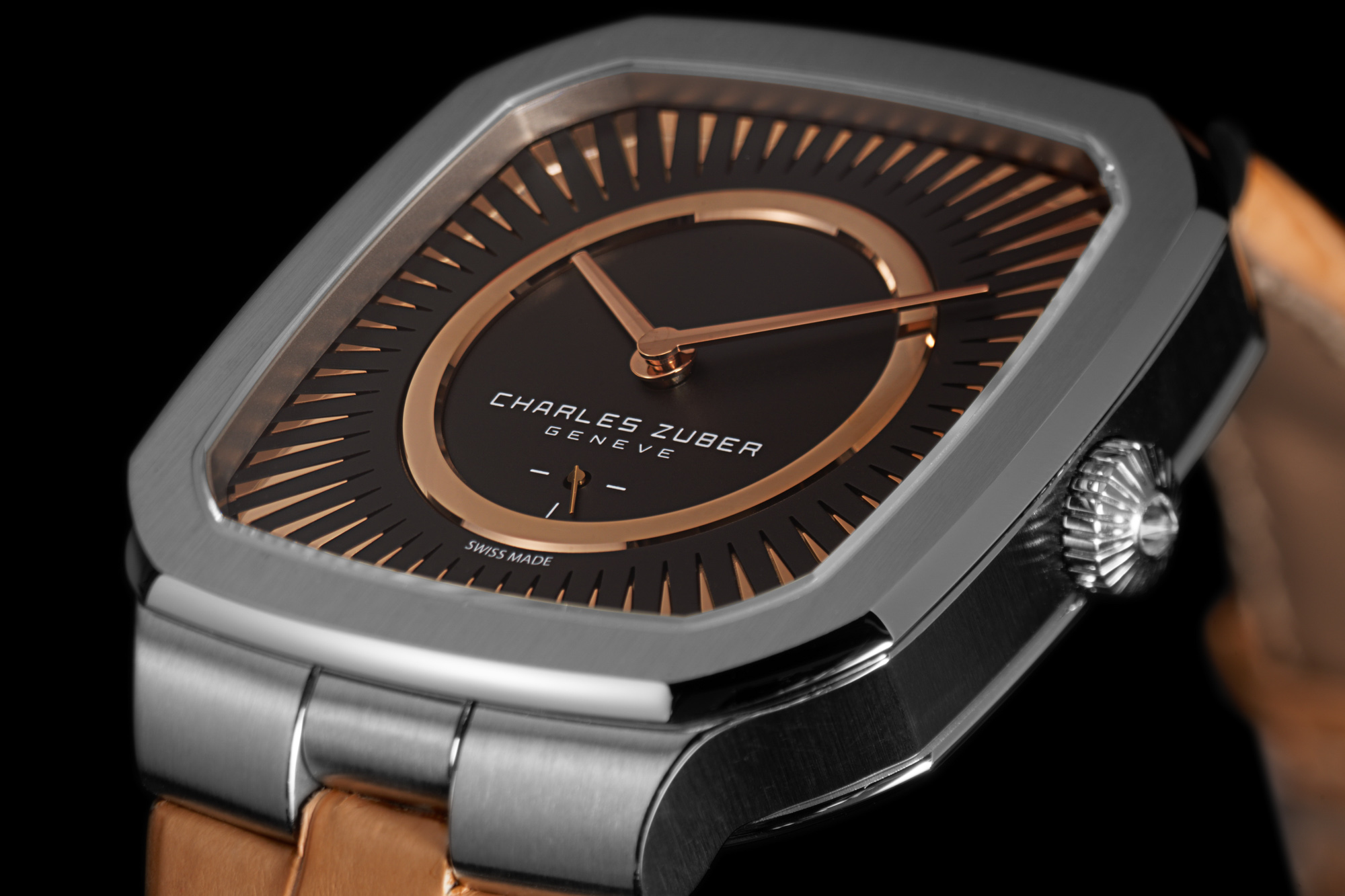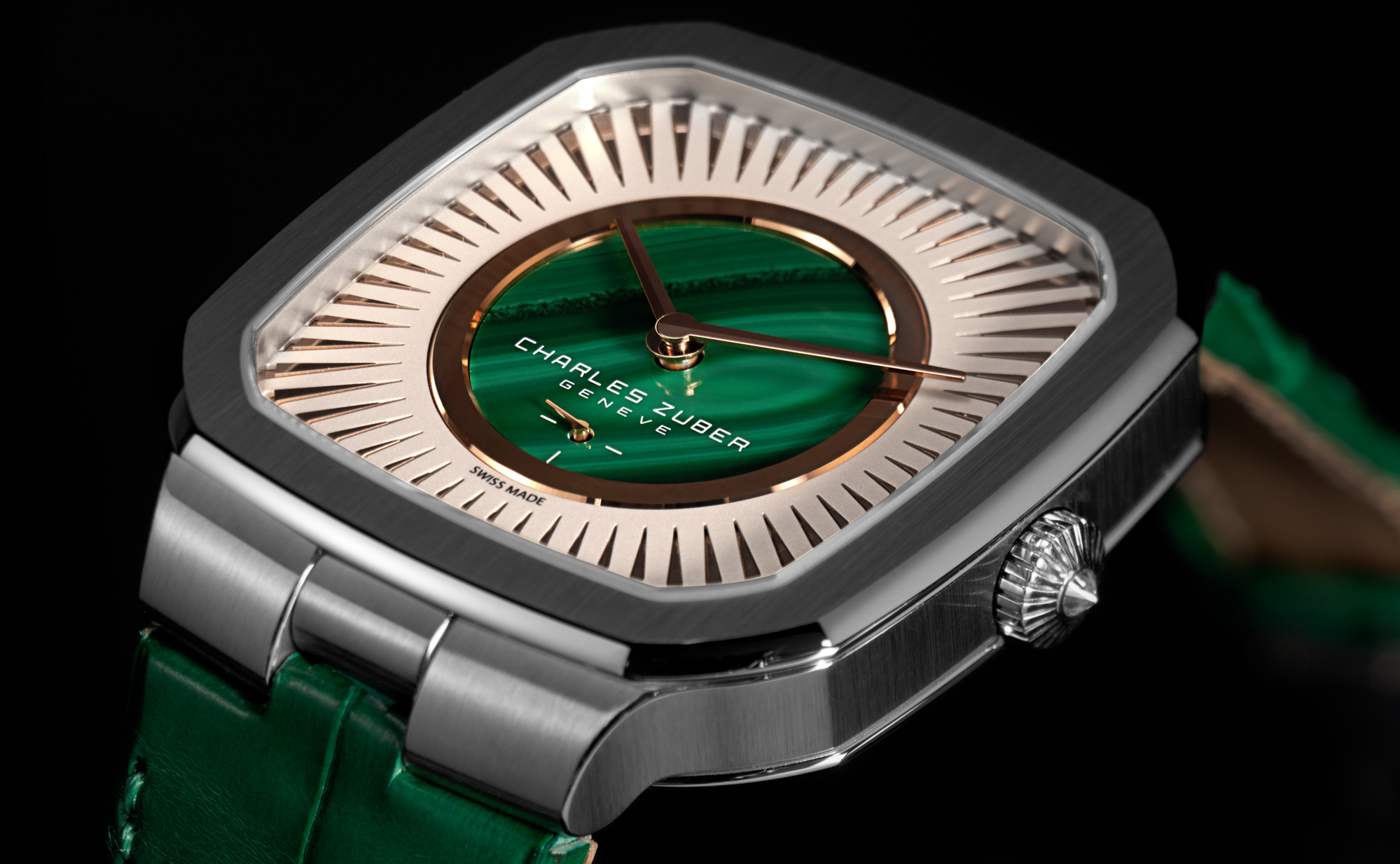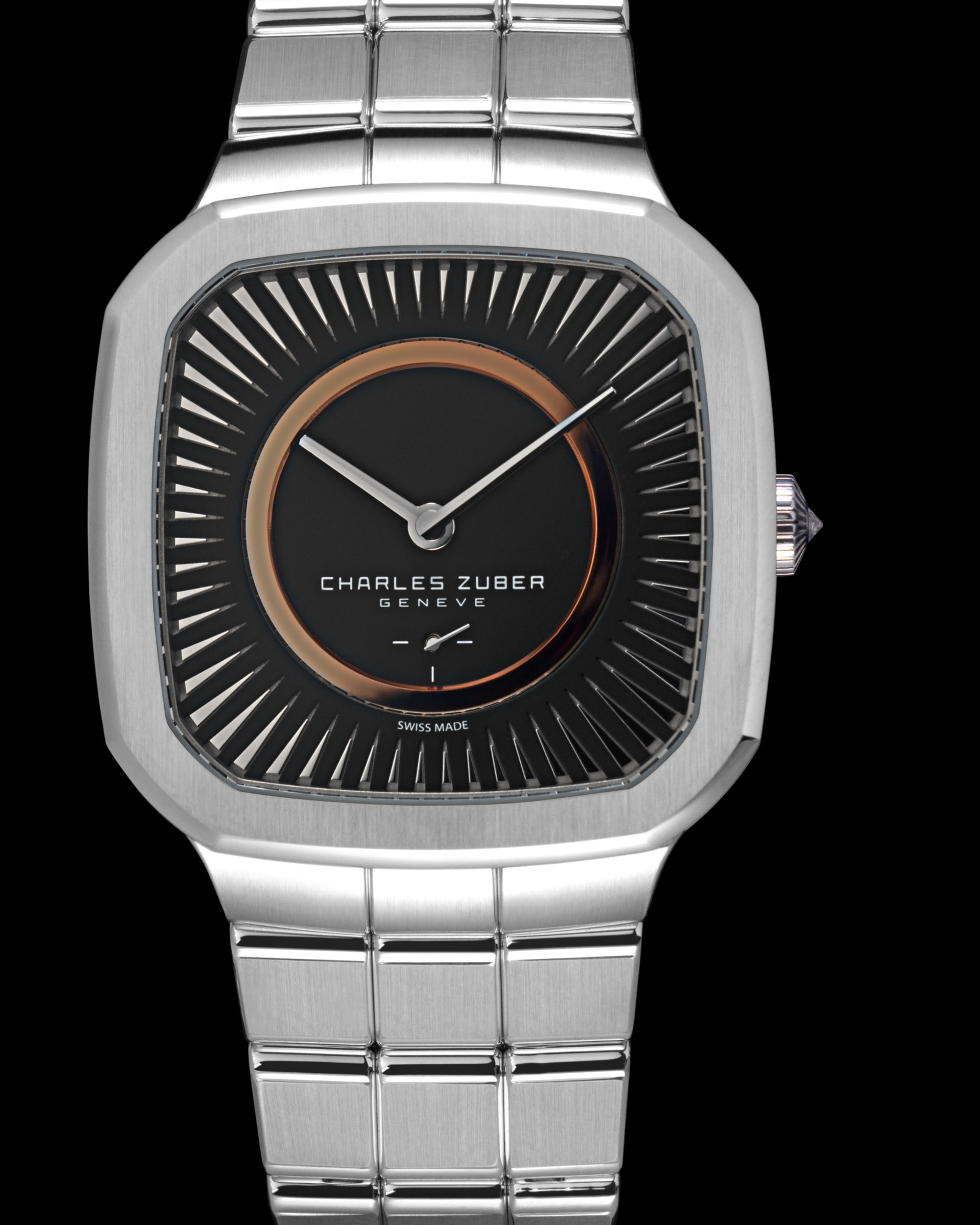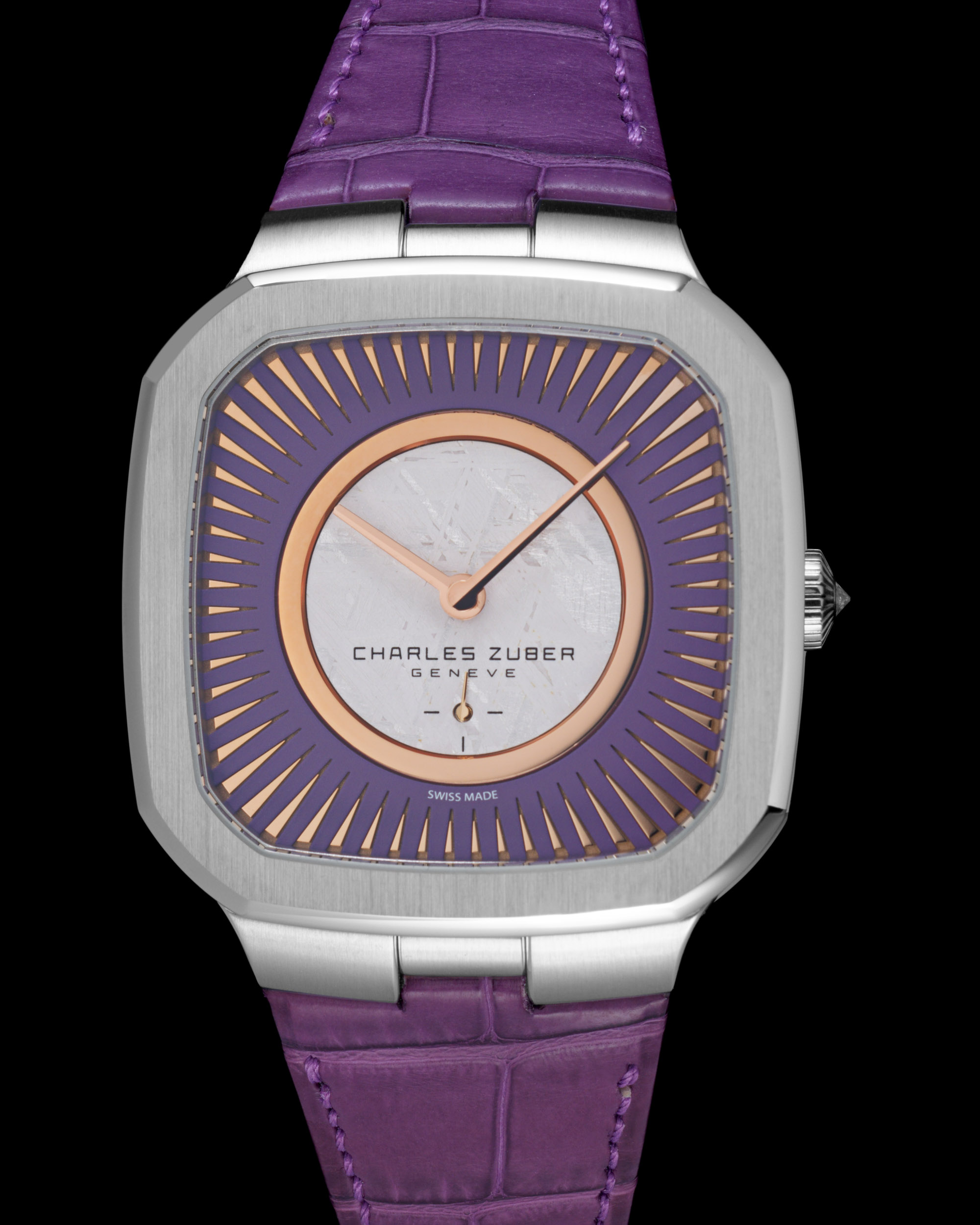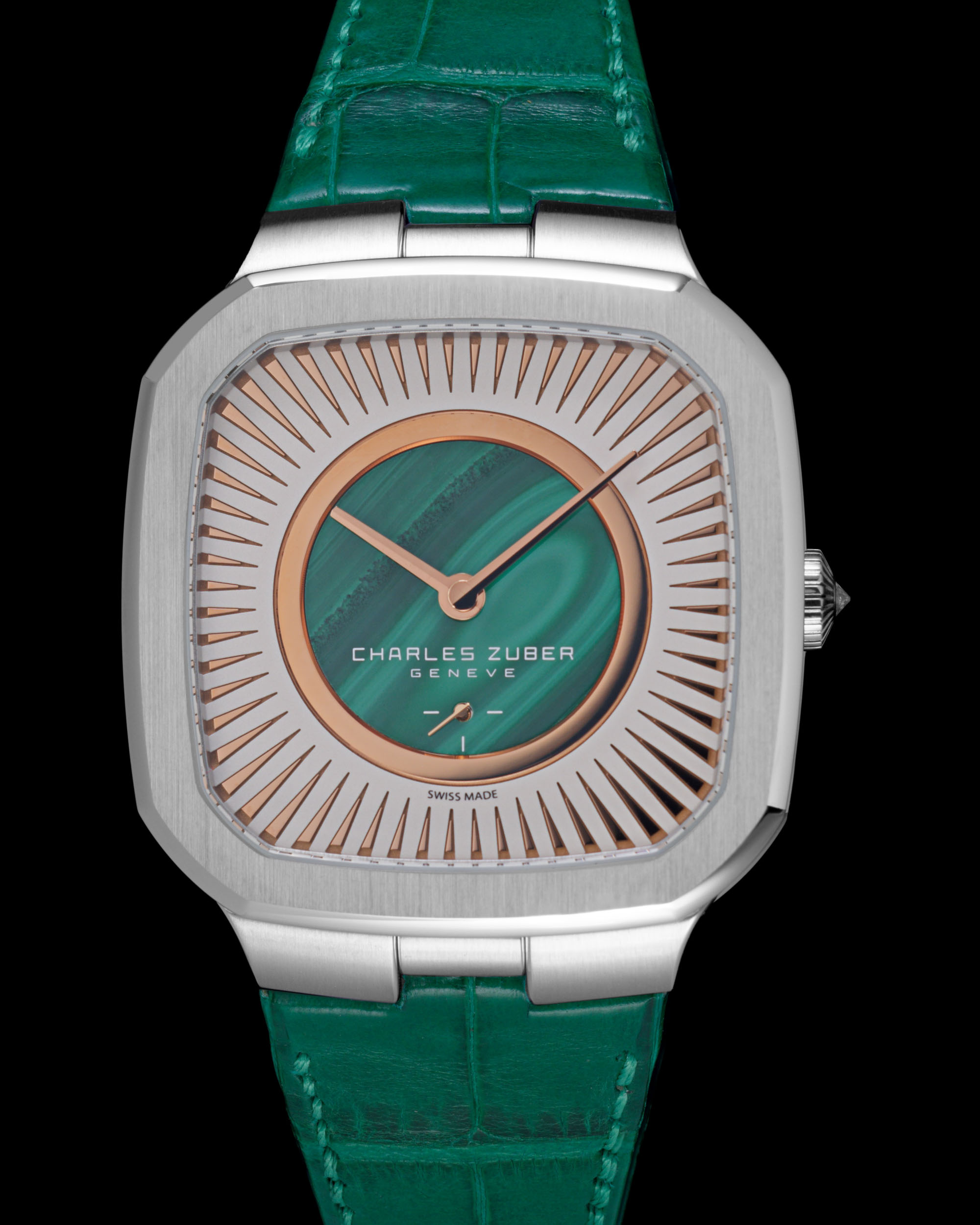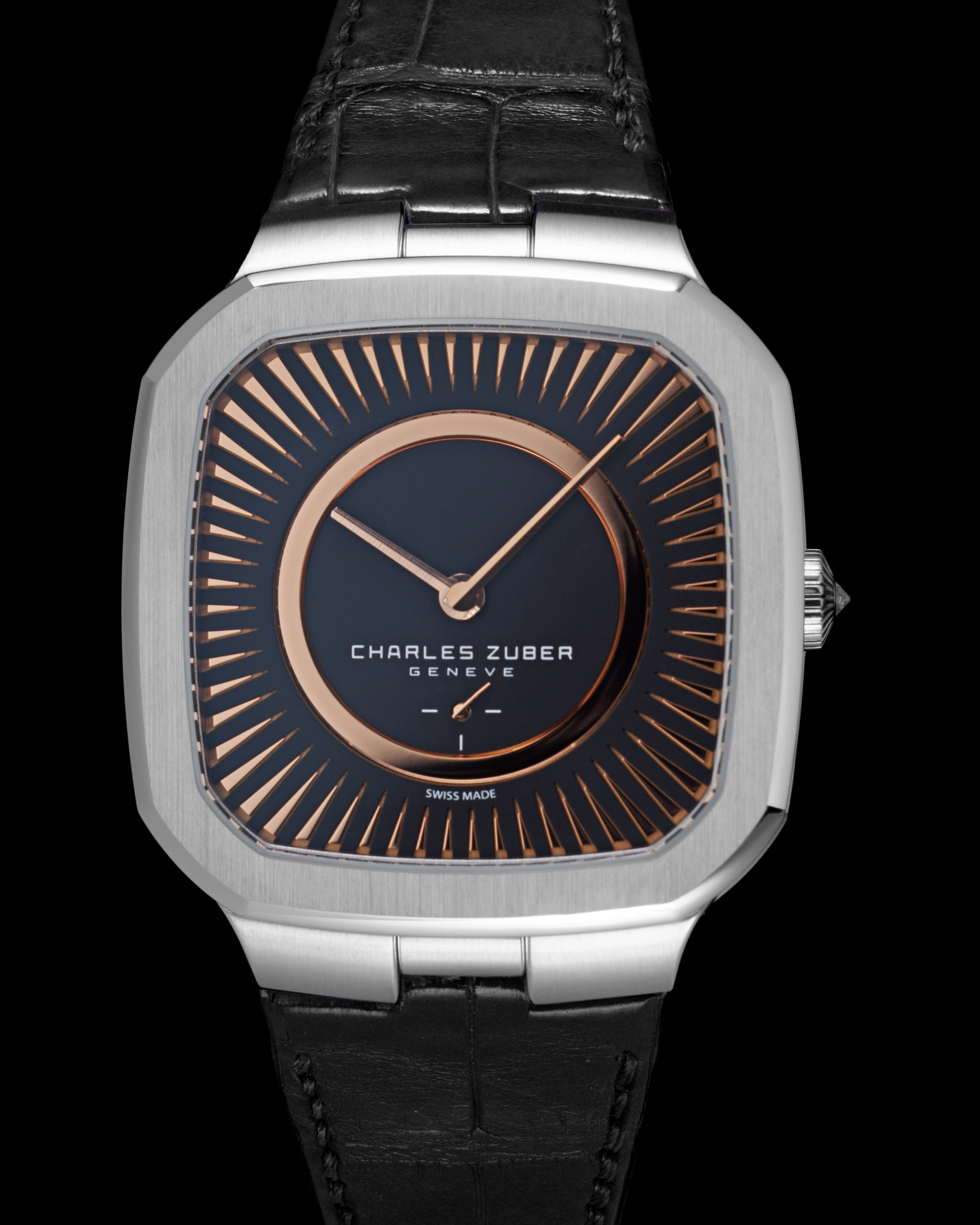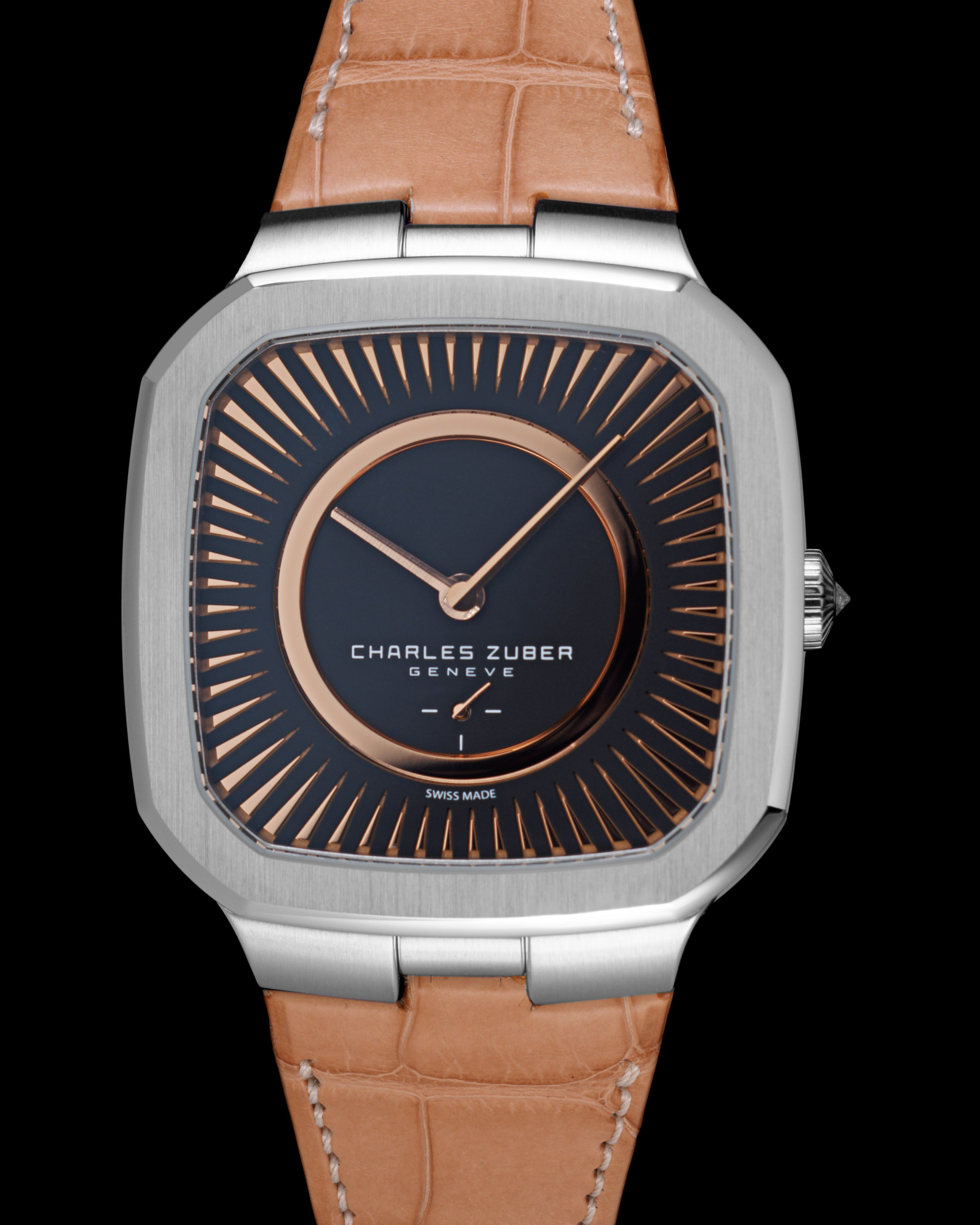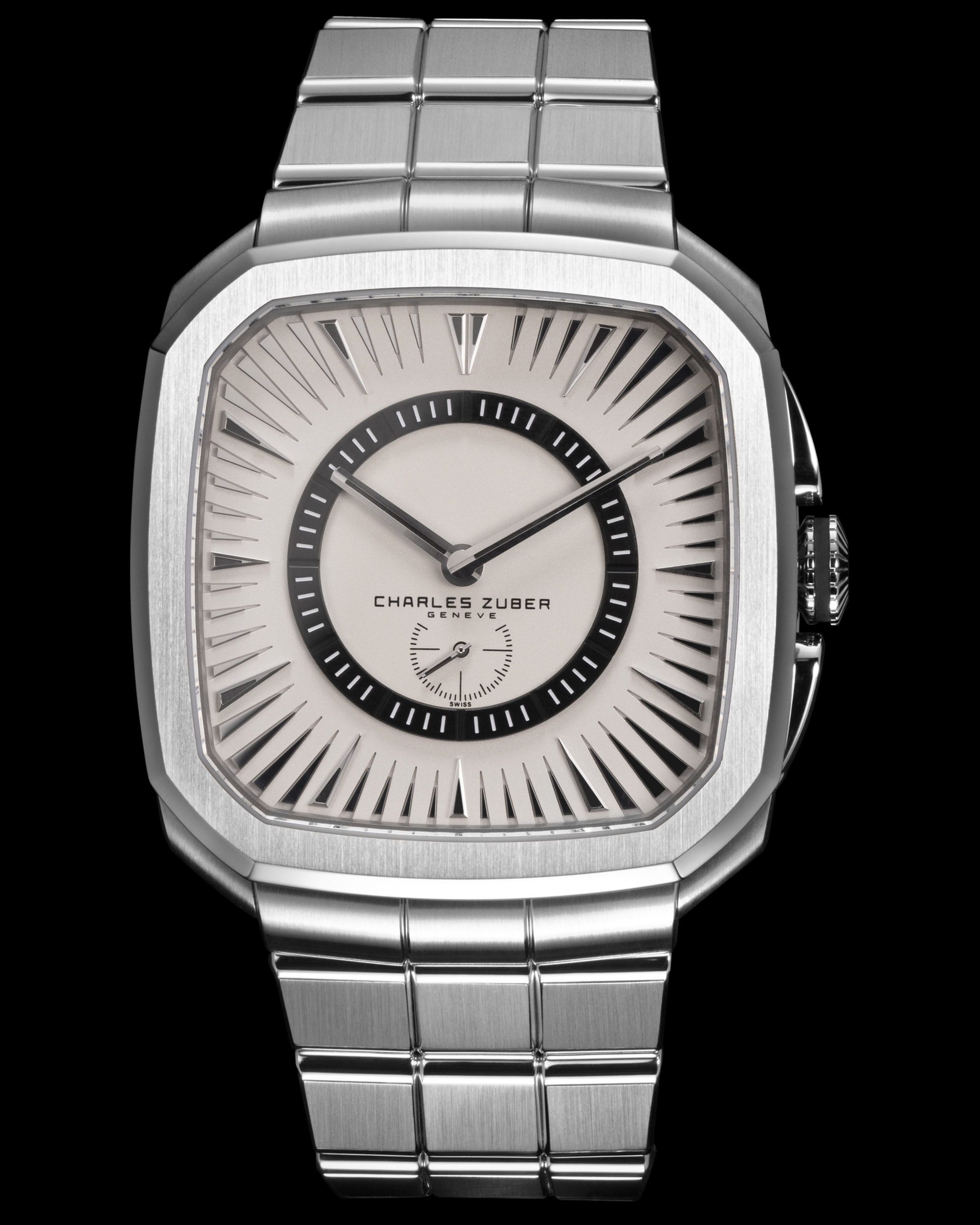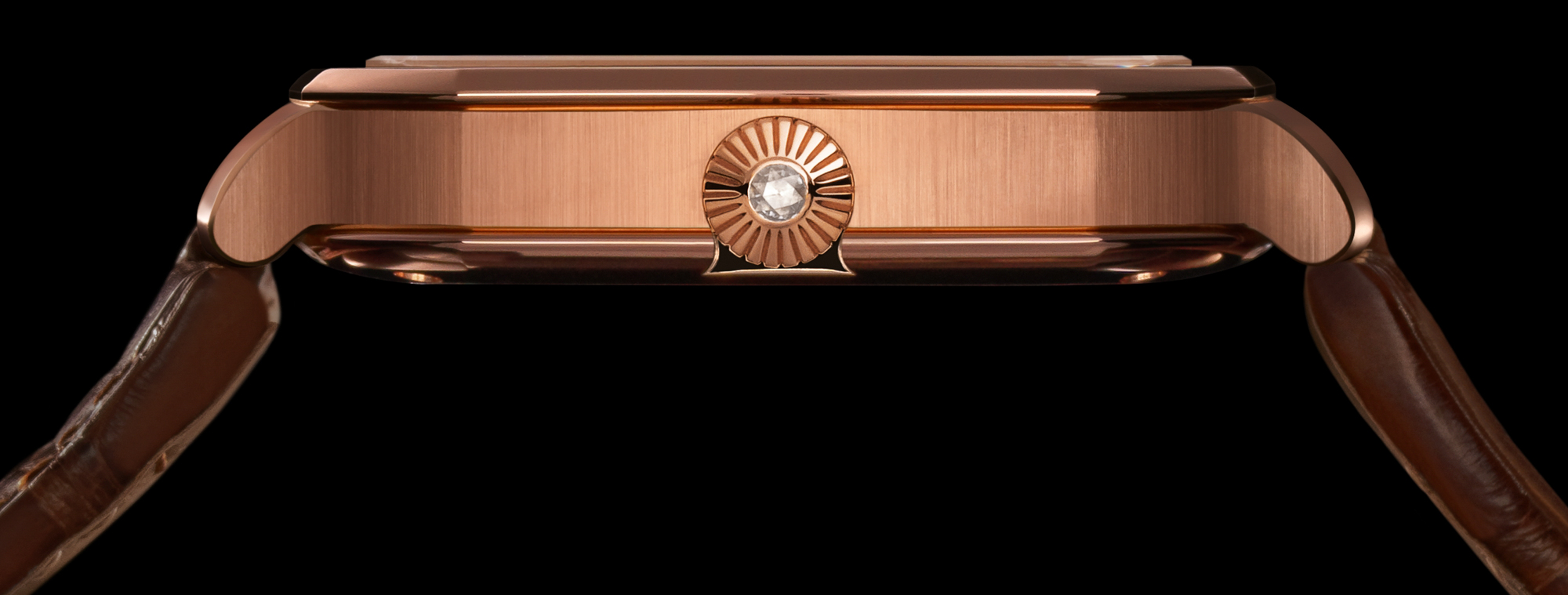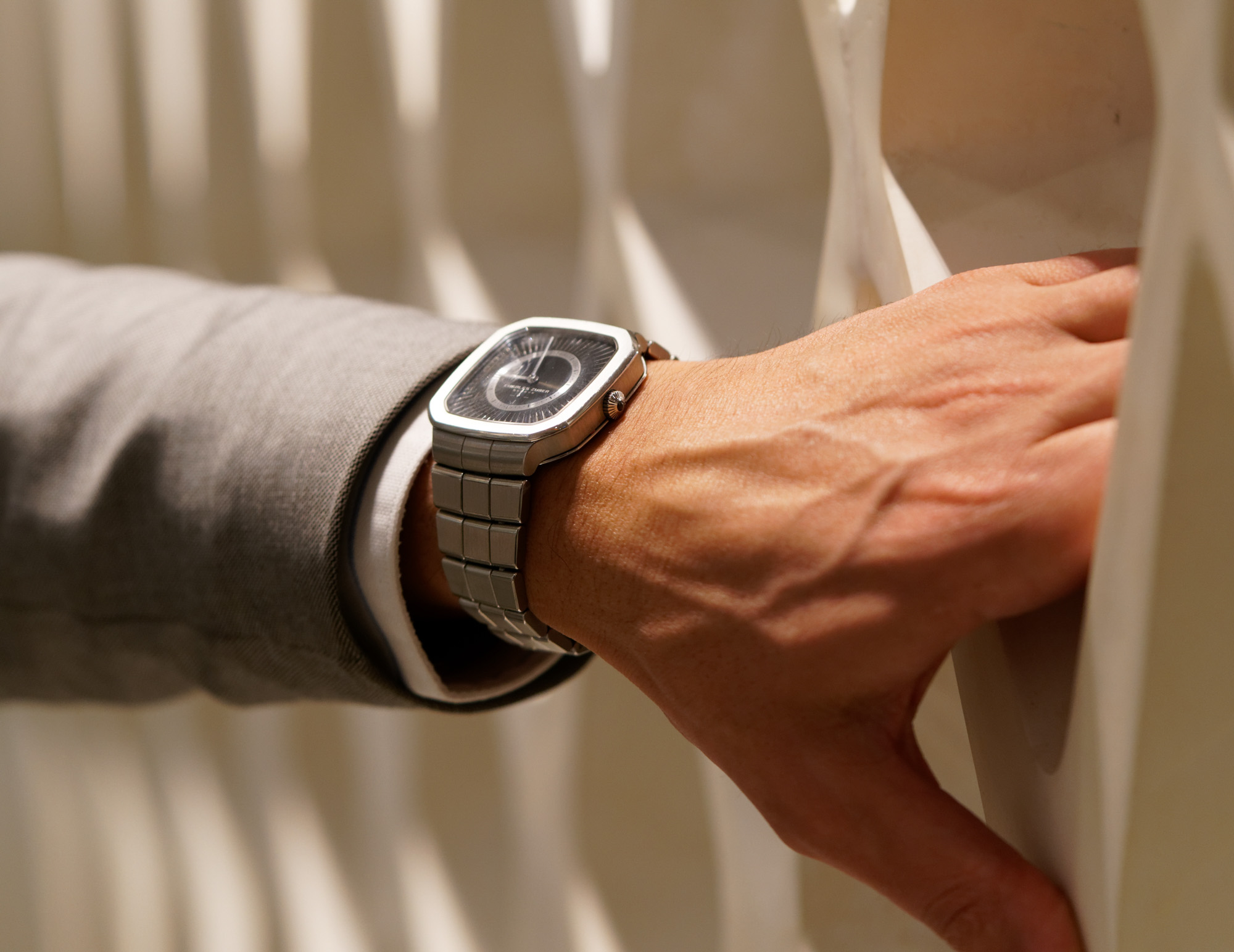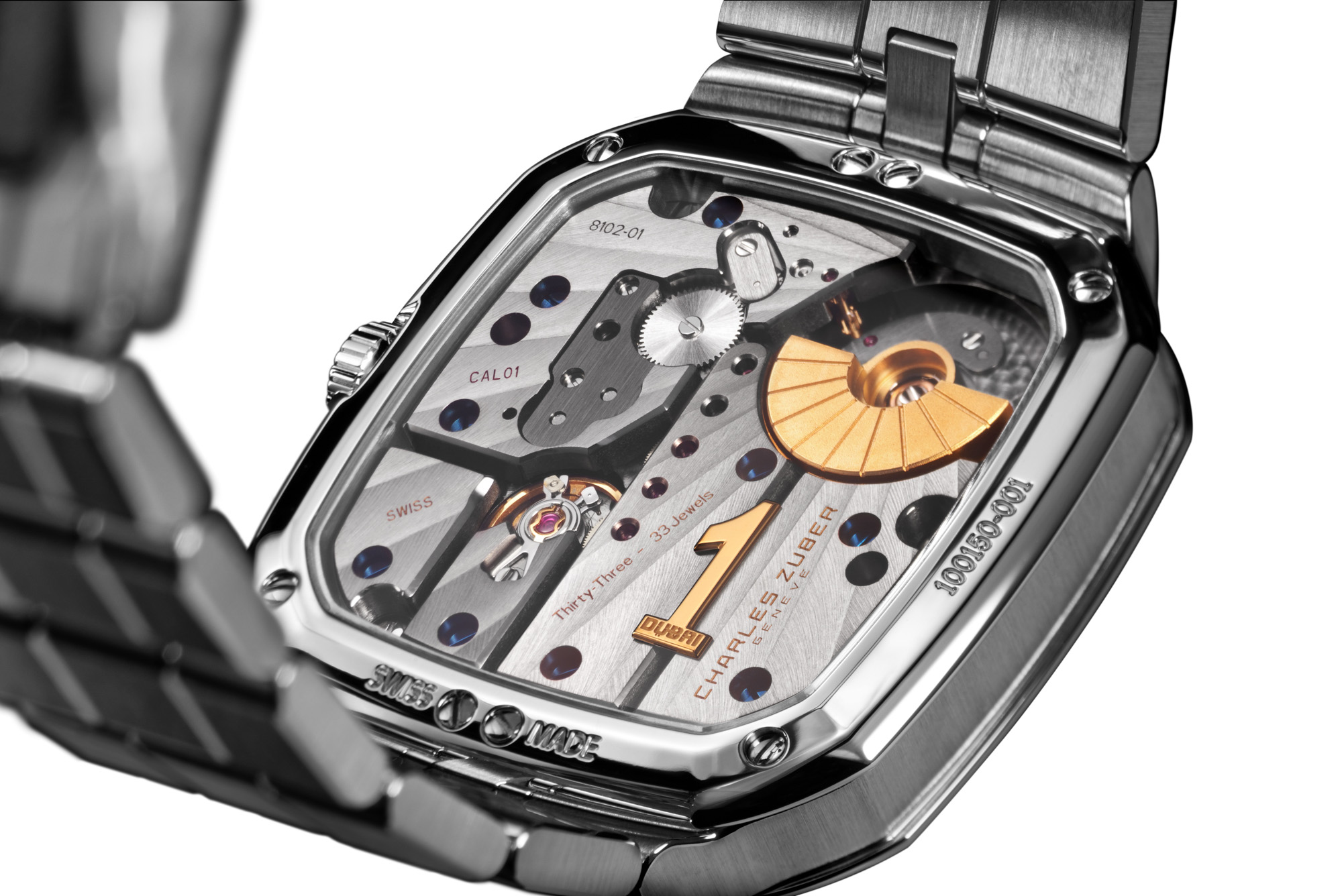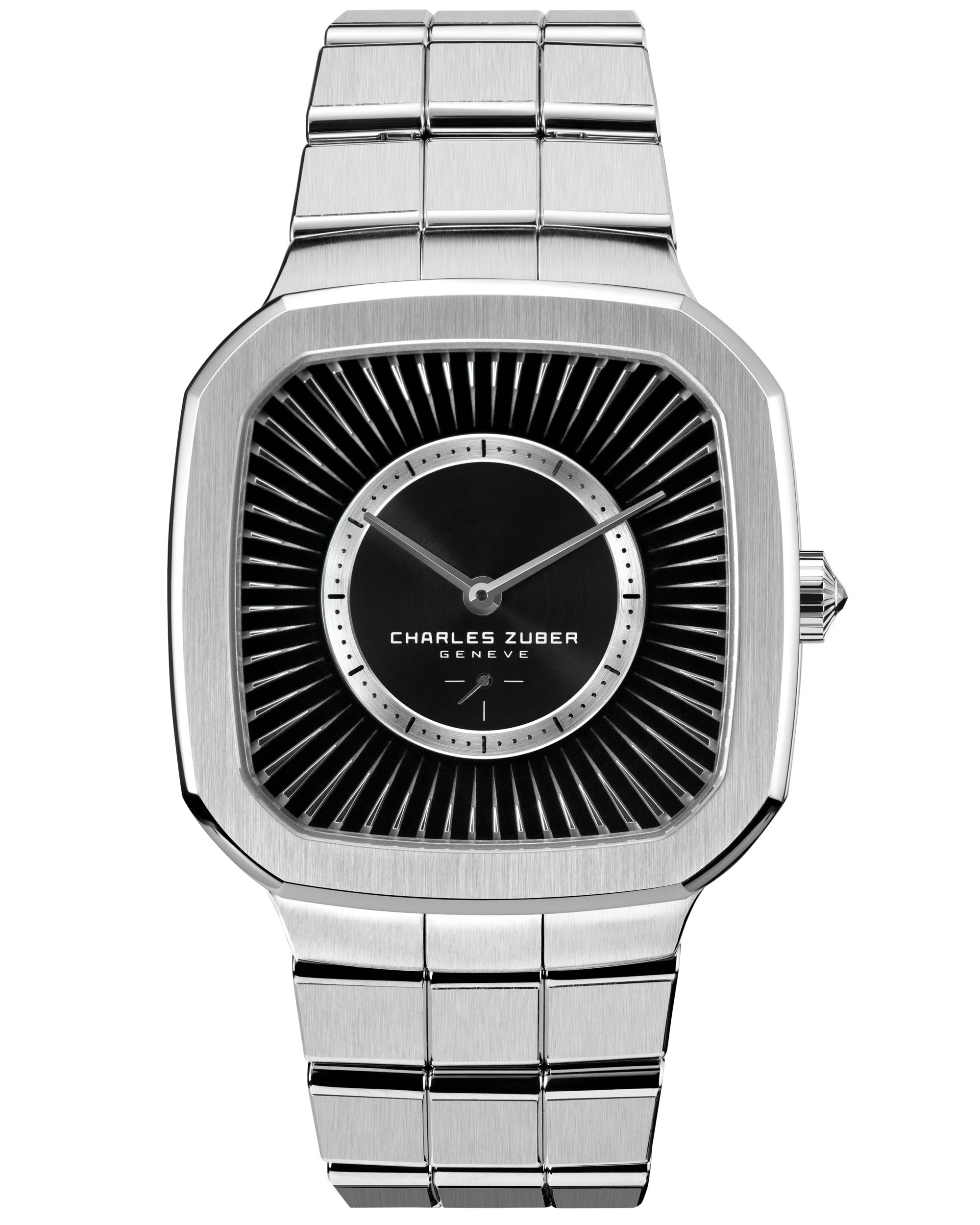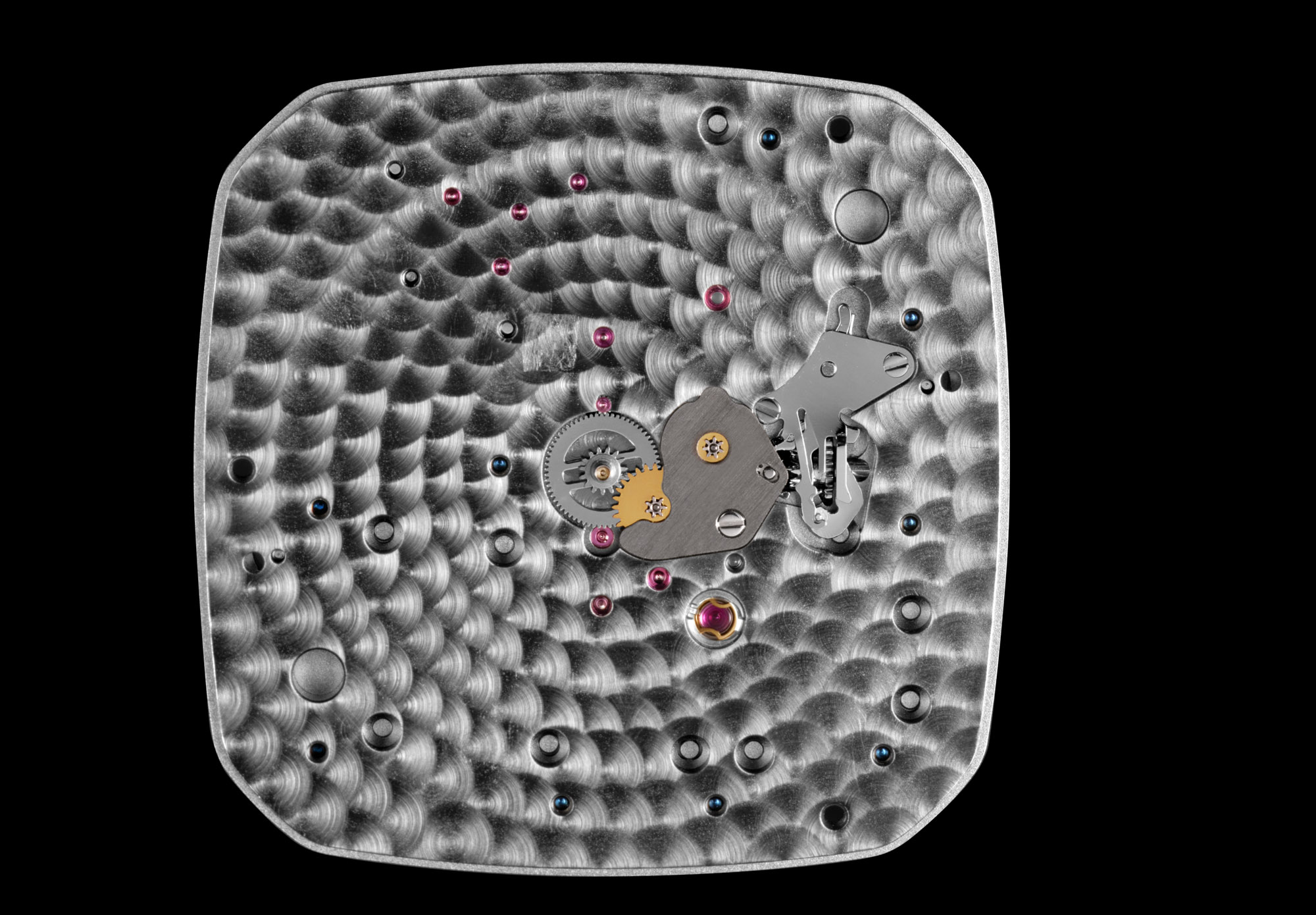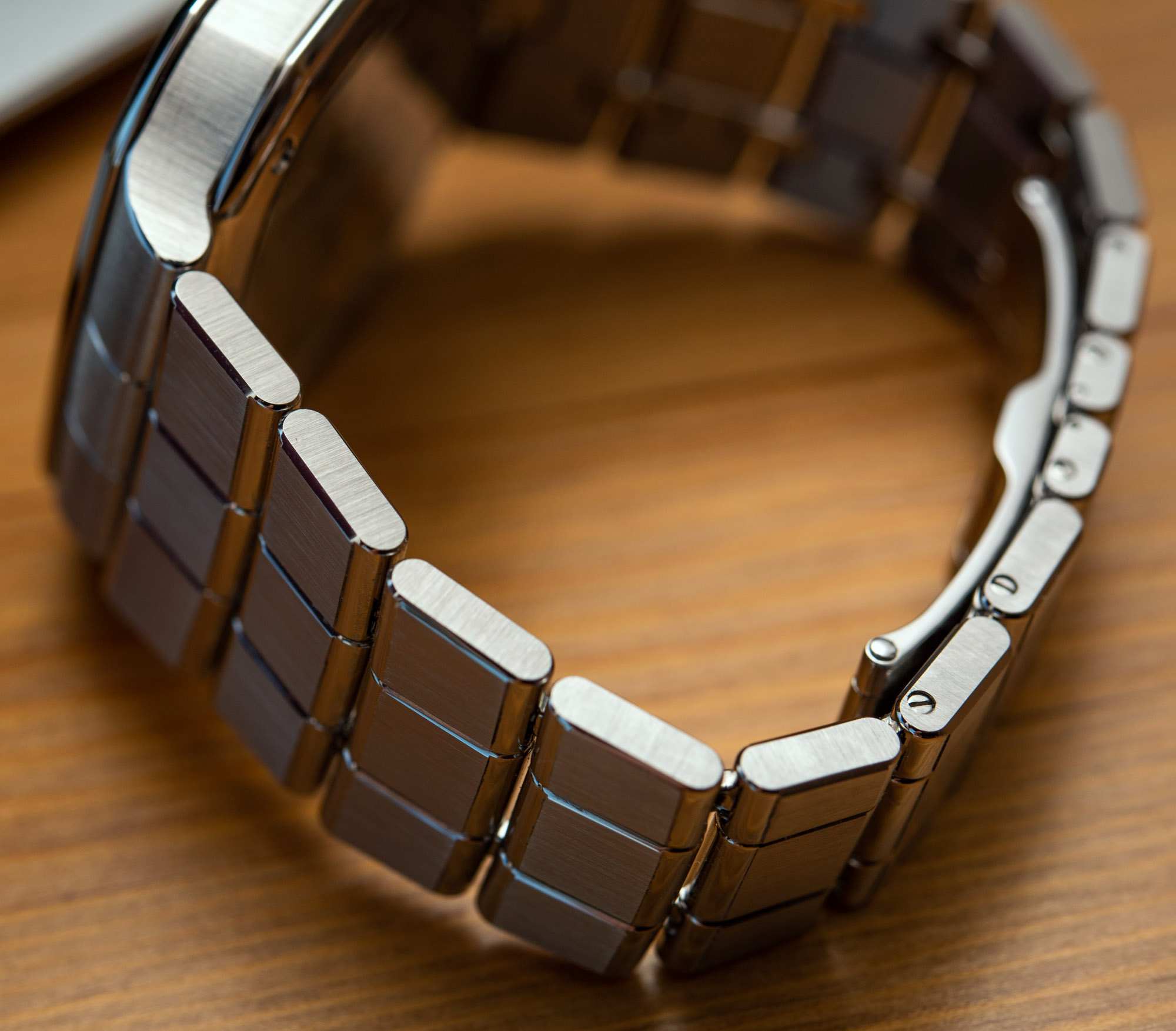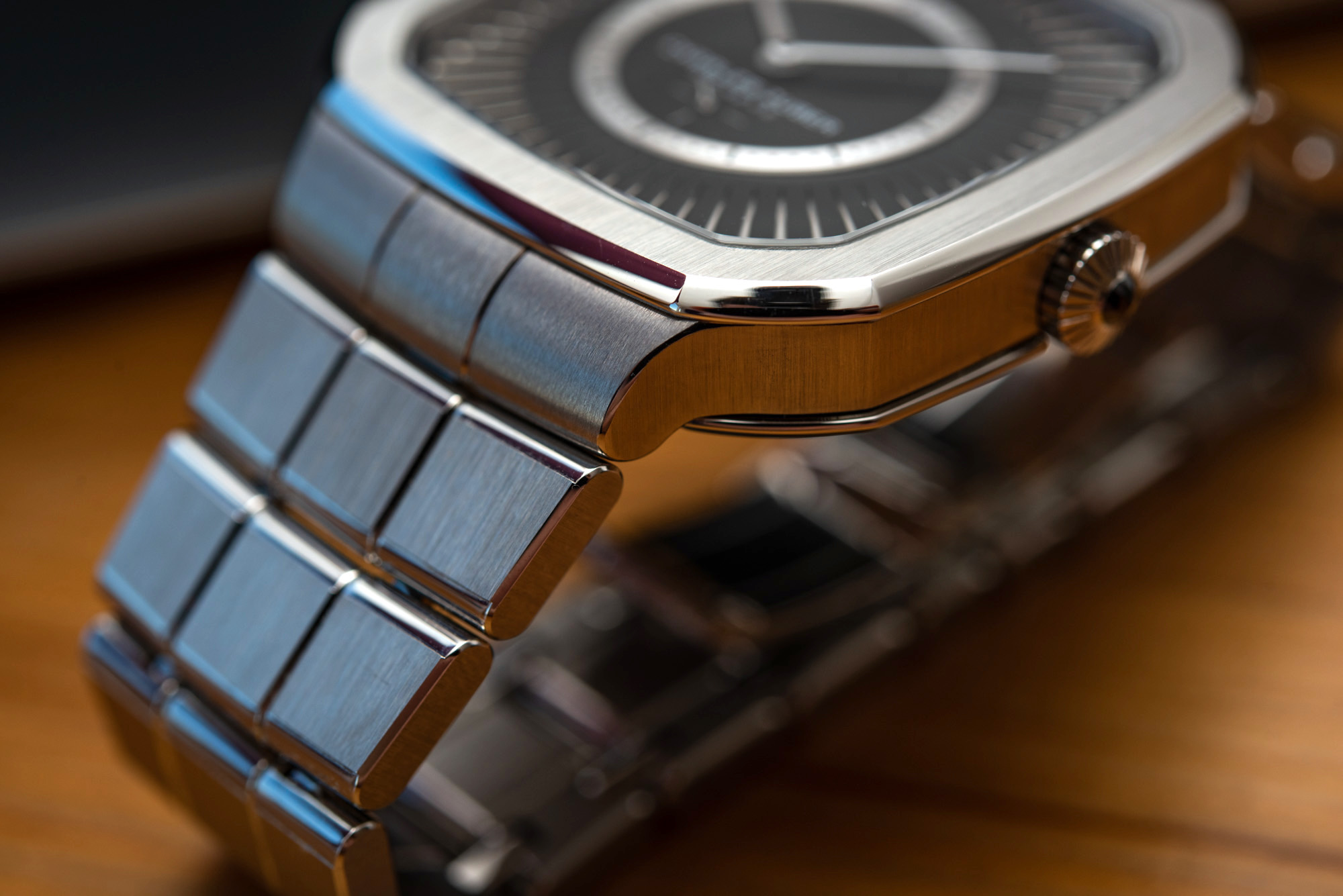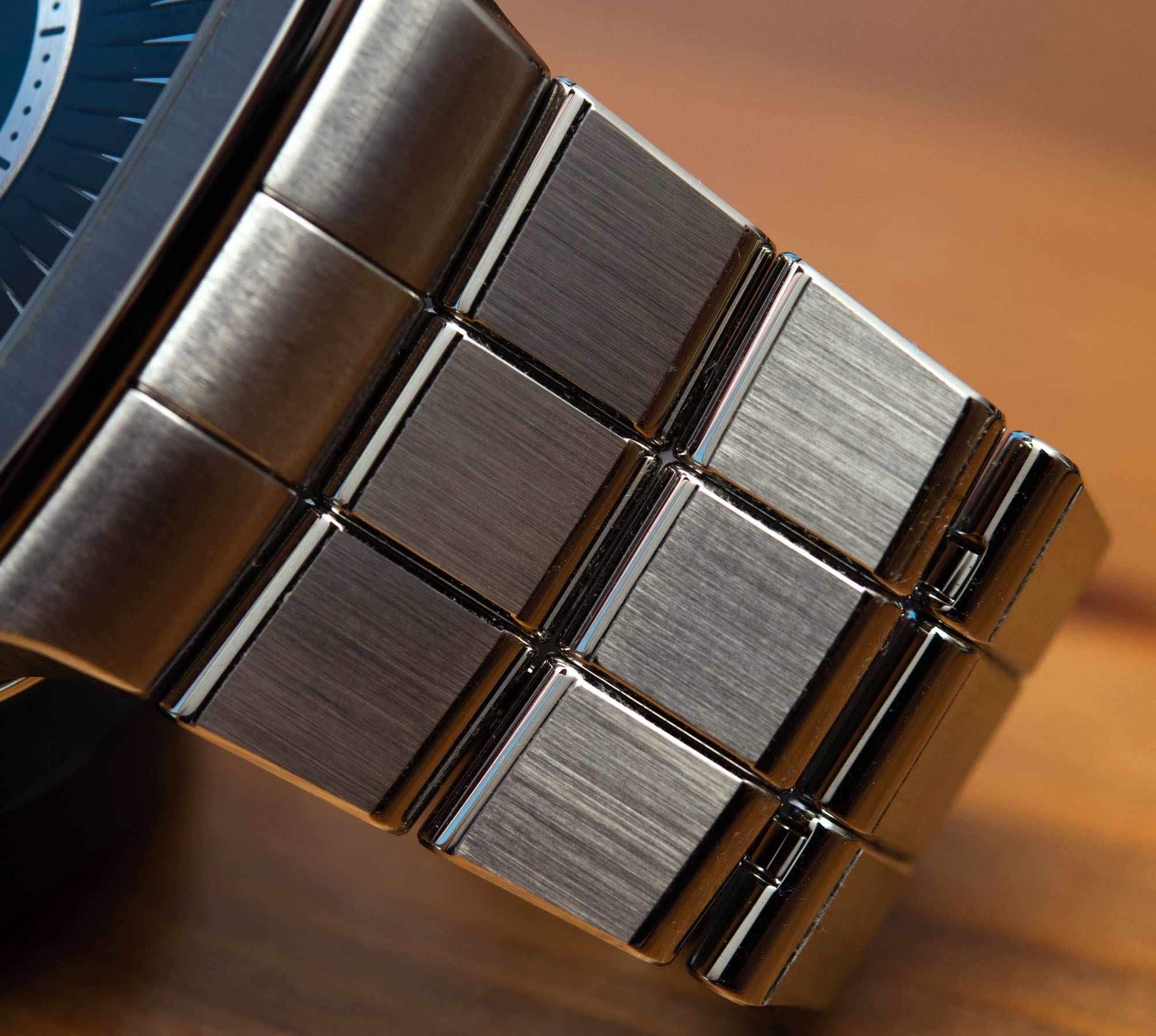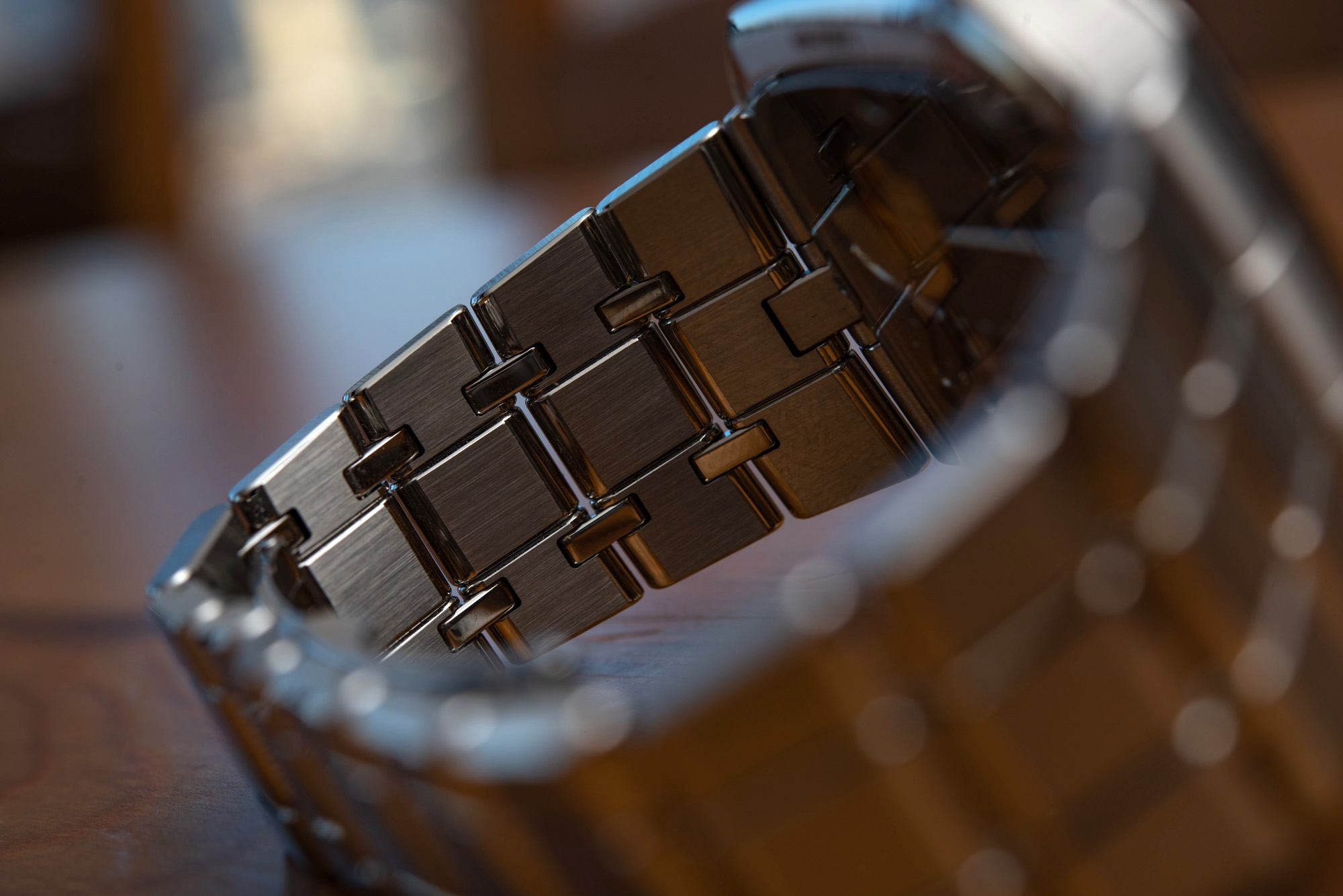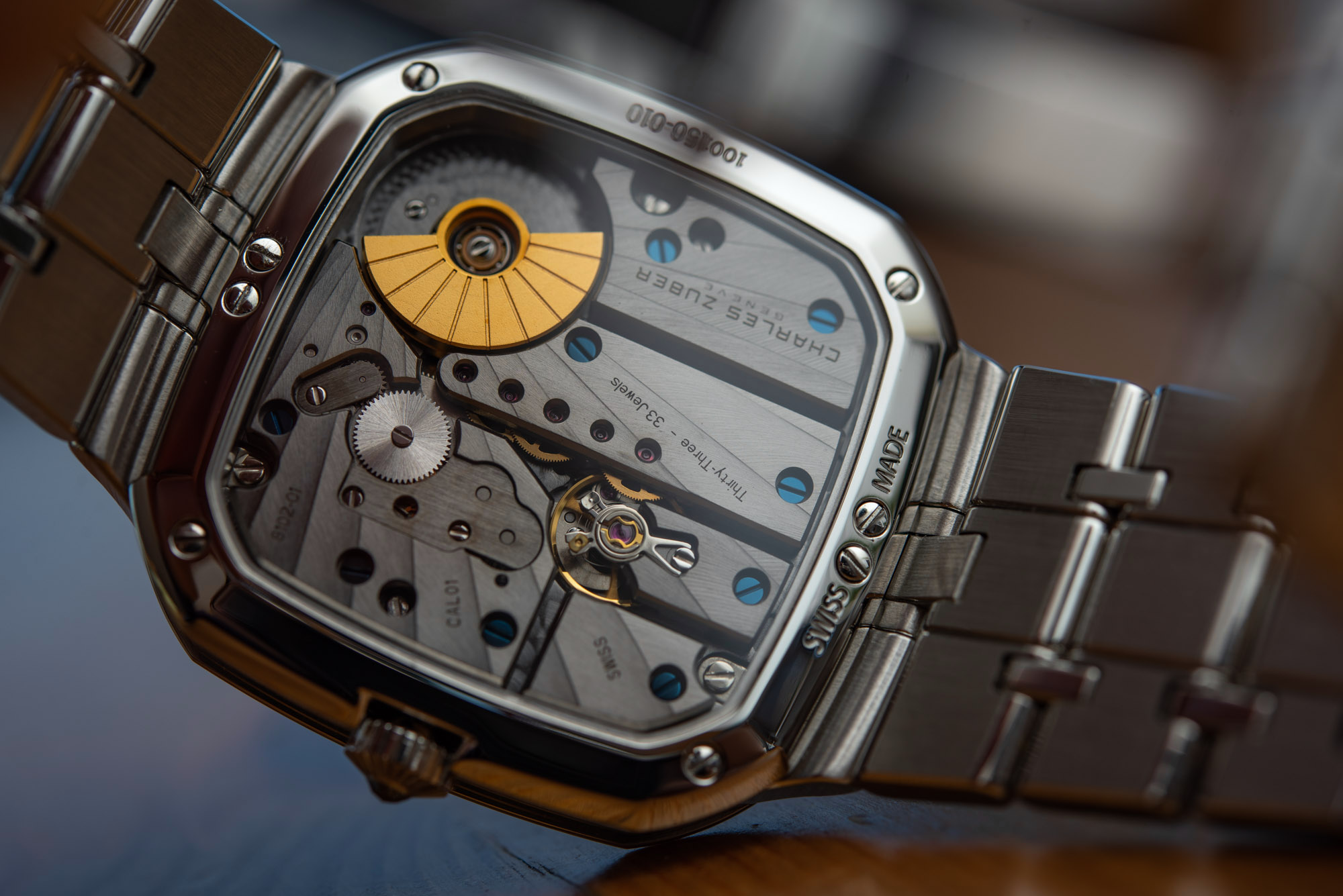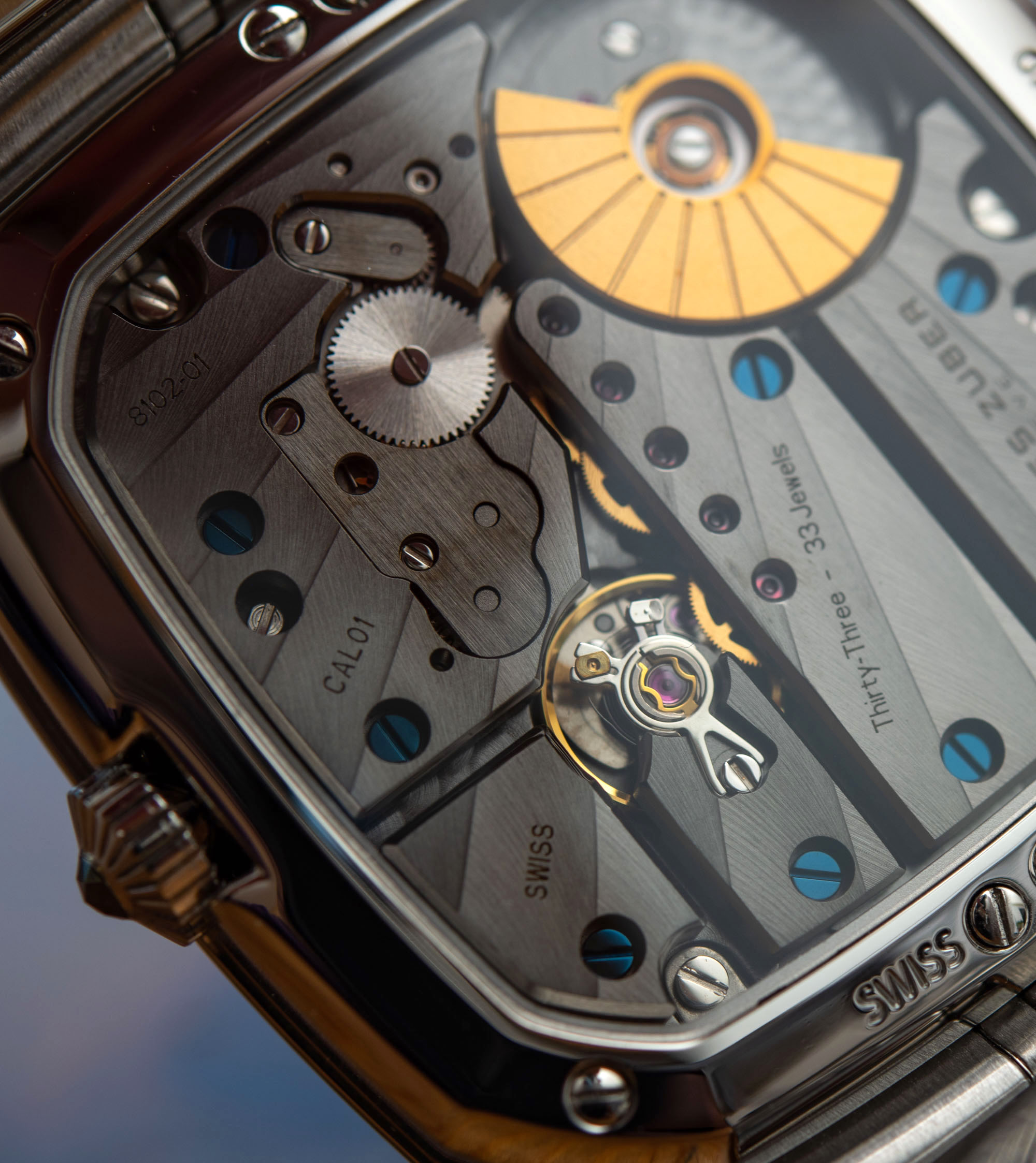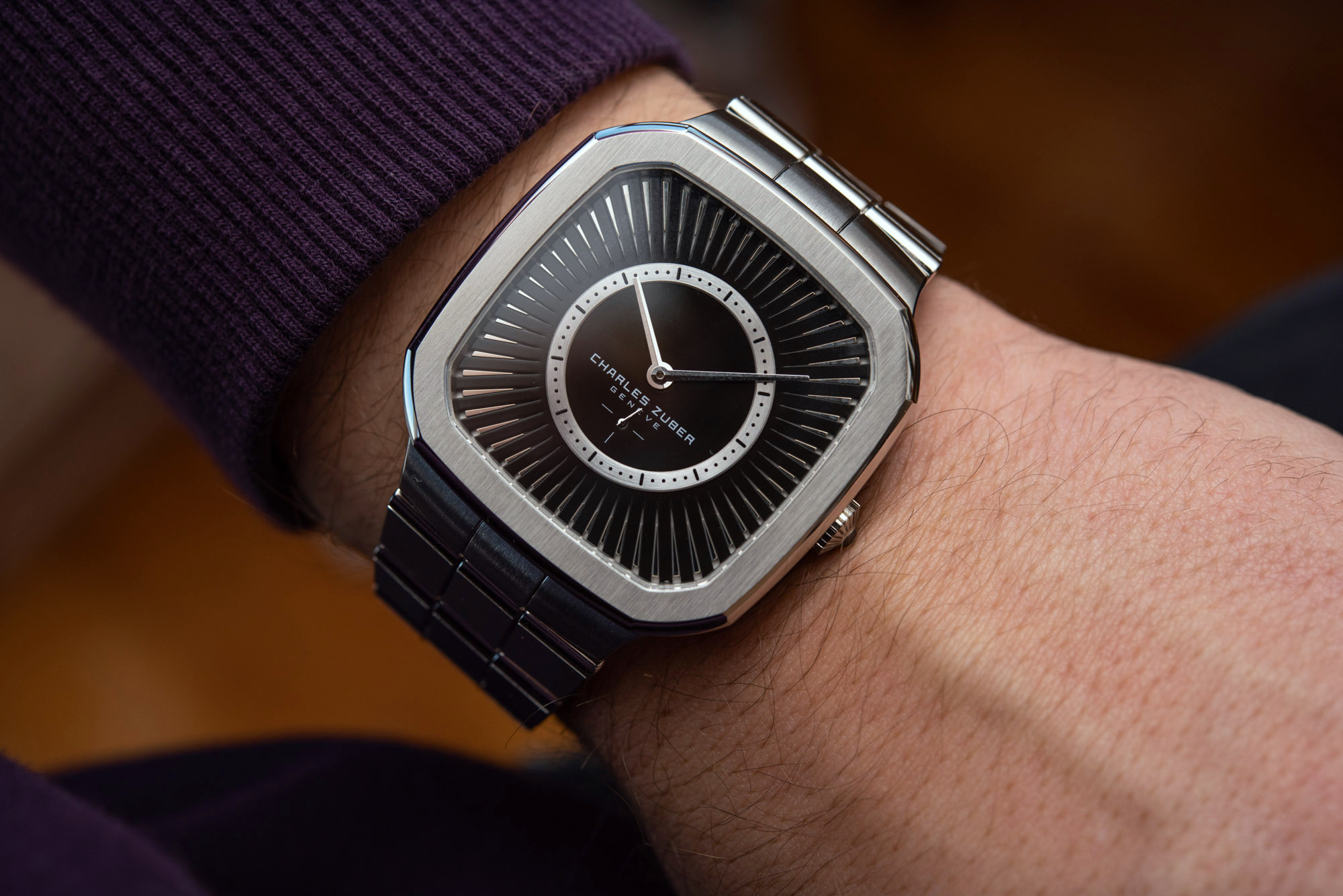
Recently founded and introduced at the 2022 Abu Dhabi Art Fair, today’s Charles Zuber brand “pays homage to the spirit and personality of the master jeweler, a lively and luminous man, building on an aesthetic that echoes that of the timepieces from the 1970s and 1980s, truly a golden age in the history of wristwatches.” Herein, we are reviewing the Charles Zuber Perfors Founder’s Edition, the latest contender for another slice from the integrated bracelet luxury steel watch segment.

Charles Zuber (1933-2012) was a master jeweler and inventor who ran the Ch. Zuber & R. Baumgartner studio in Carouge, dreaming up and developing ultra-high-end jewelry creations for the likes of Audemars Piguet and Harry Winston. Throughout his career, Zuber had never given his name to a brand but rather stayed behind the scenes, working with renowned luxury companies. A brand was nevertheless to come, thanks to a multi-talented trio: Vincent Perego, a gem-setter by trade, Aram Garabetian, jeweler, and entrepreneur Mohamed Hilal. The idea to establish a tribute to Zuber is said to have come from Vincent Perego and his encounter with Charles Zuber, back in 2006.
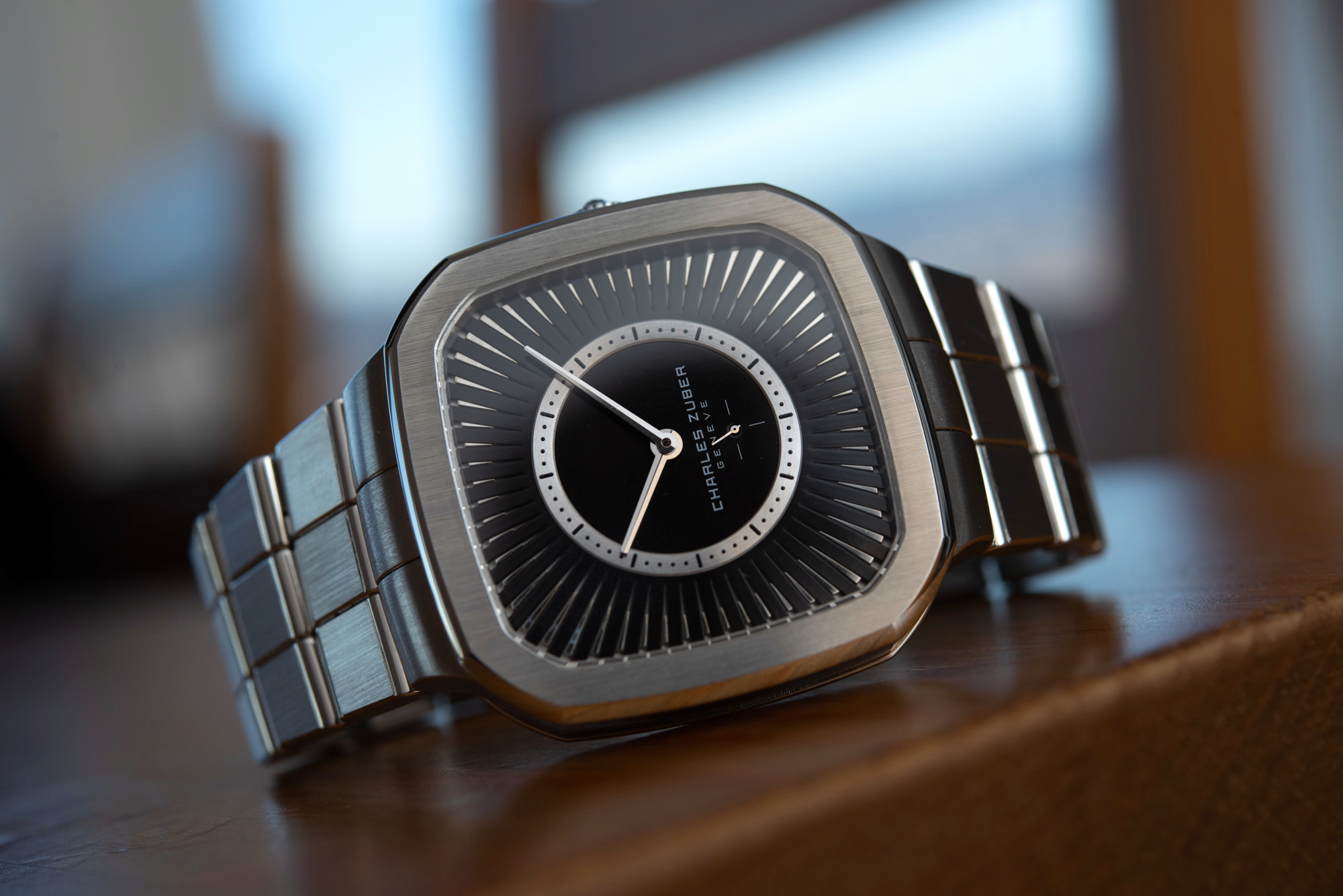
The mission is to continue Zuber’s legacy through a series of special jewelry creations and embrace an iconic era for watch design – the 1970s-1980s – and align it with contemporary tastes. That’s quite an assignment, and so Charles Zuber turned to one of the most highly regarded designers of modern watchmaking: Eric Giroud. Giroud has an incredible portfolio, listing some 30 companies from Vacheron Constantin and MB&F to Tissot and Mido, along with several dozens of others he’s worked with behind the scenes.
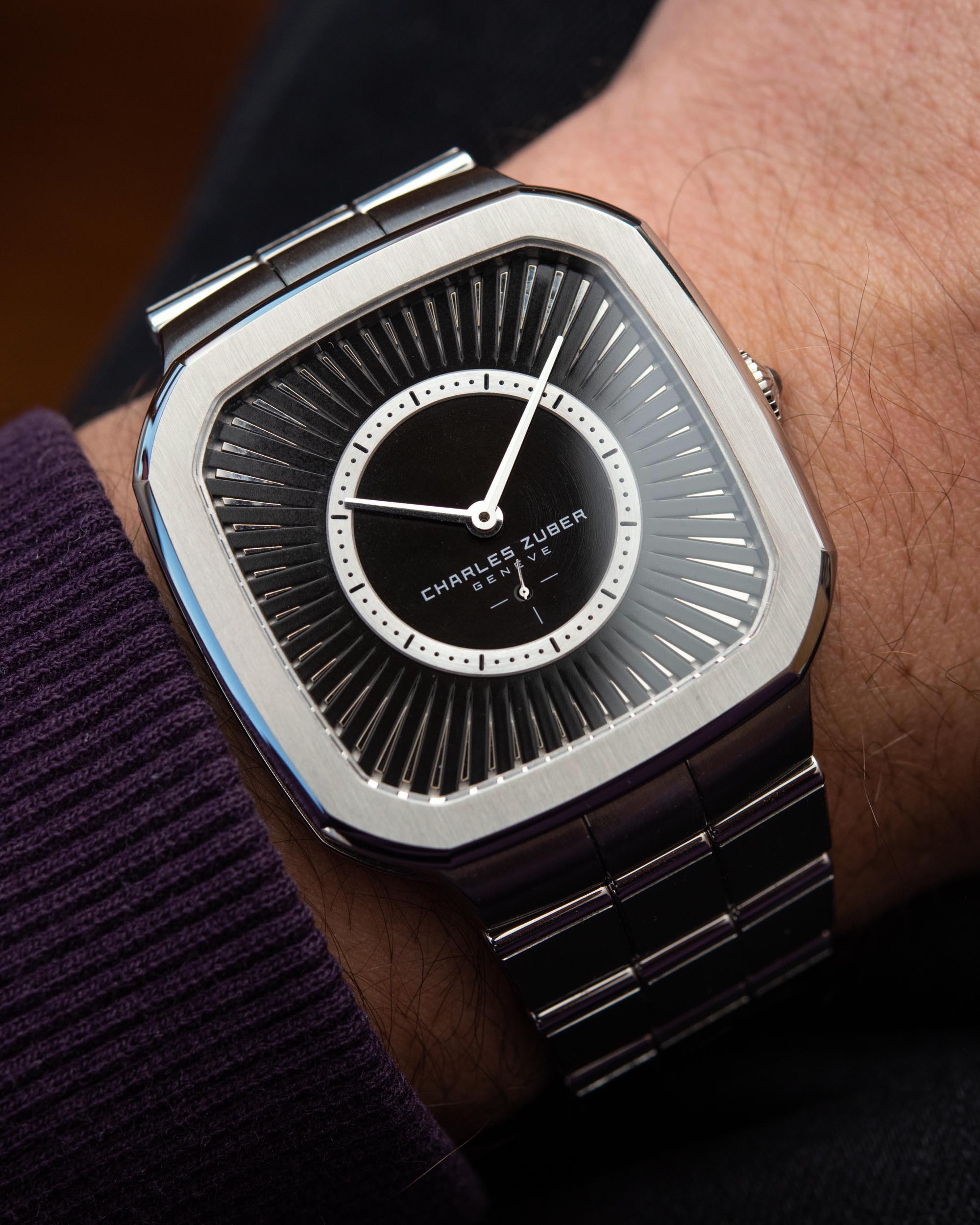
To hold in one’s hand a watch produced by a “proper designer” is almost as though the watch were made from a different type of metal. It’s a real, tangible thing, with two sidenotes: First, just as one has to handle a fair number of watches before they can tell just by feel and sight the difference between, say, 316L steel and 904L, or white gold and platinum, it also takes an eye to recognize those carefully judged decisions that an experienced designer considers and ultimately gets right. Second, a good design is not one that appeals to everyone — an impossible task, anyway — but one that more successfully tackles the balancing act of proportions, textures, light, and tactility. We could go so far as to add a third component: A good design ages well and has some tricks up its sleeve to entertain the wearer weeks, months, or maybe even years down the road. Still, at the end of the day, each person who glances at the creation will be the judge of what was just one person’s vision.
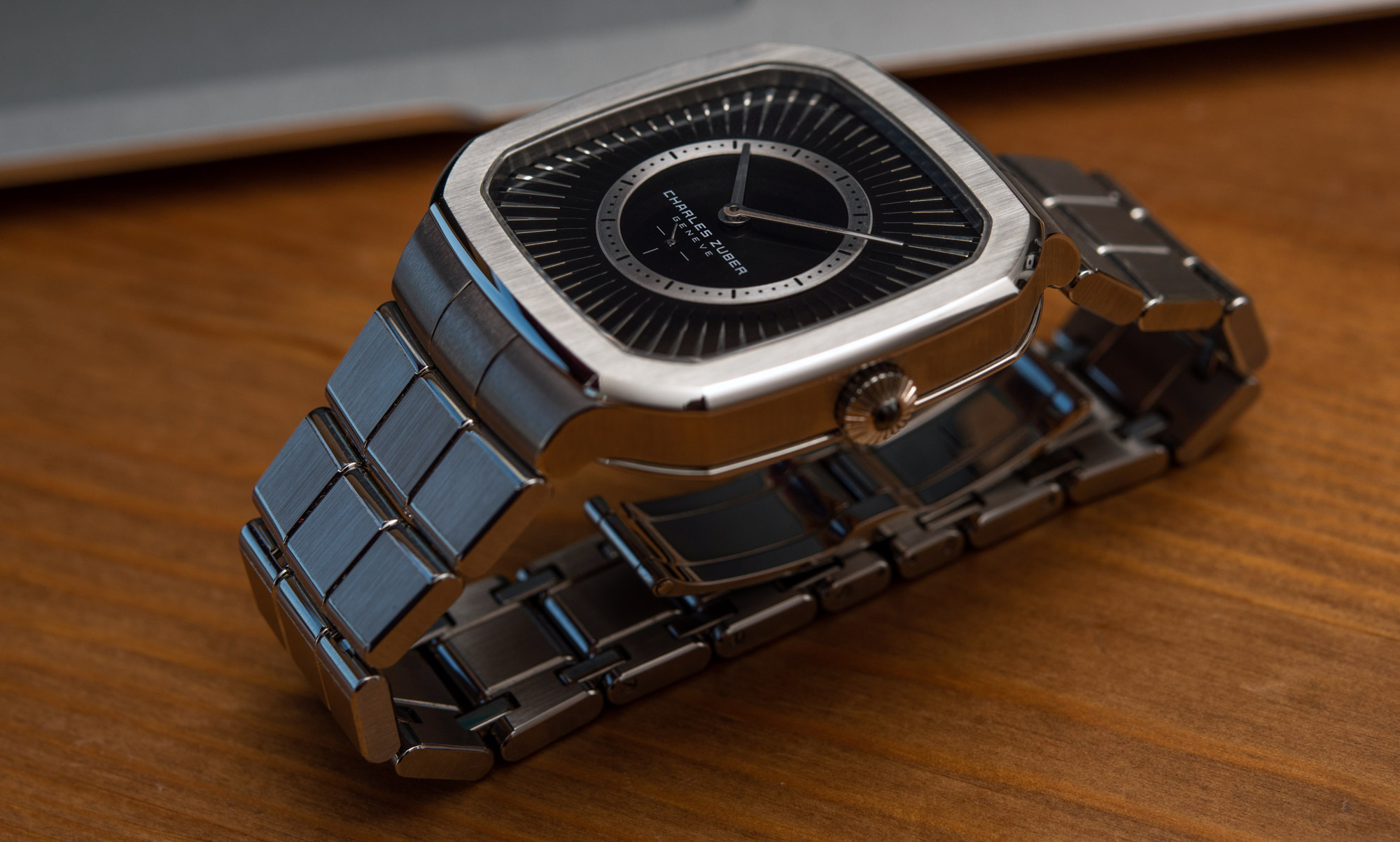
Originally introduced in 2020 and put on the back burner due to the pandemic, and finally launching in November 2022, the Charles Zuber Perfos wants to be a complete package from the get-go. Case in point: A rectangular movement was commissioned from La Chaux-de-Fonds to follow the shape of the case, a new bracelet was designed with links individually milled with jewelry-like intricacy, and a multi-layered dial with an openworked construction was developed.
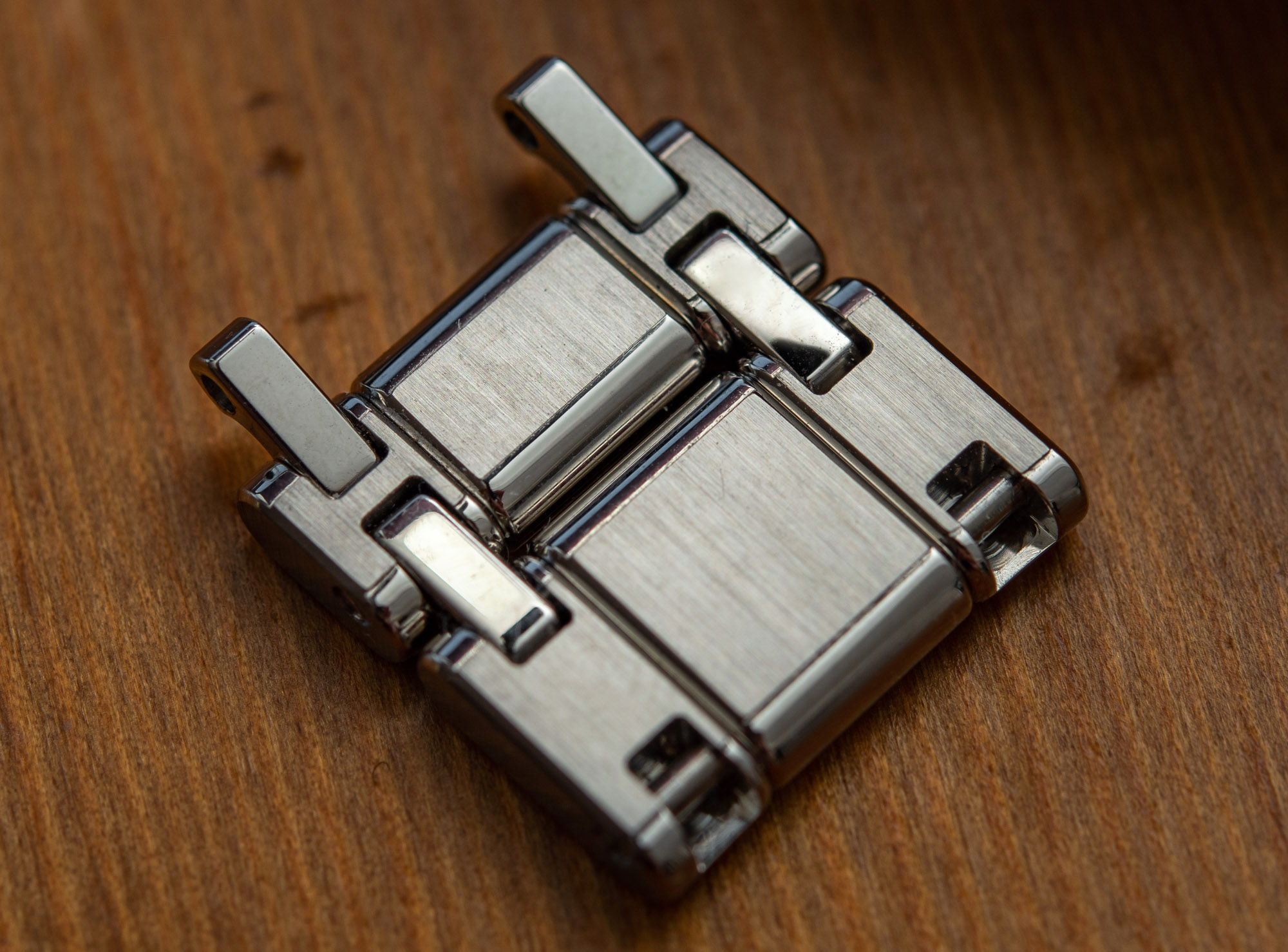 Over the last two years, while the Perfos was awaiting its fresh and proper launch, the integrated steel bracelet segment has well and truly exploded, even from its already highly elevated base in 2020. From three-figure contenders to high-five-figure ones, brands have created their version of what they thought the market had an unquenchable thirst for — a steel case with some level of angularity, matched with a bracelet that appears to be an integral part of it, crowned with a dial that displays at least a little bit of personality. This has been the recipe that several dozen collections, all new and refreshed, have followed.
Over the last two years, while the Perfos was awaiting its fresh and proper launch, the integrated steel bracelet segment has well and truly exploded, even from its already highly elevated base in 2020. From three-figure contenders to high-five-figure ones, brands have created their version of what they thought the market had an unquenchable thirst for — a steel case with some level of angularity, matched with a bracelet that appears to be an integral part of it, crowned with a dial that displays at least a little bit of personality. This has been the recipe that several dozen collections, all new and refreshed, have followed.
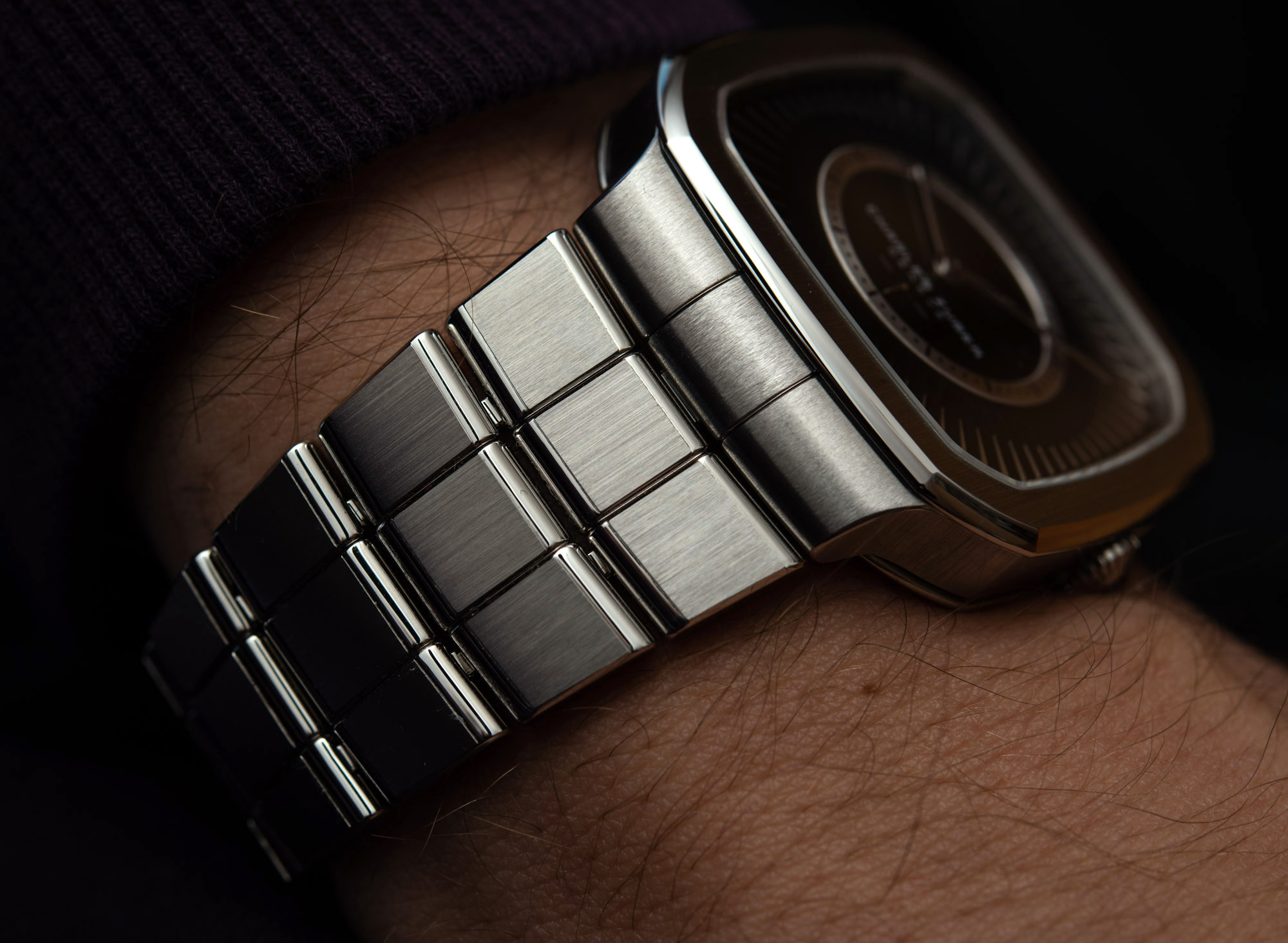
The Perfos cannot reinvent this amalgamation that originates from the 1972 Royal Oak, but it can add its own twist to every single ingredient, inside and out. Although rather large at 39 by 39mm — bear in mind that the measurements of rectangular watches will result in very different perceived dimensions when compared to those of round watches — it is dripping with ’70s coolness (especially of the Americana sort, to our eyes). Just as ’70s interior design and decor are making a comeback, it’s hard not to imagine this watch fitting perfectly in a Night Palm interior.
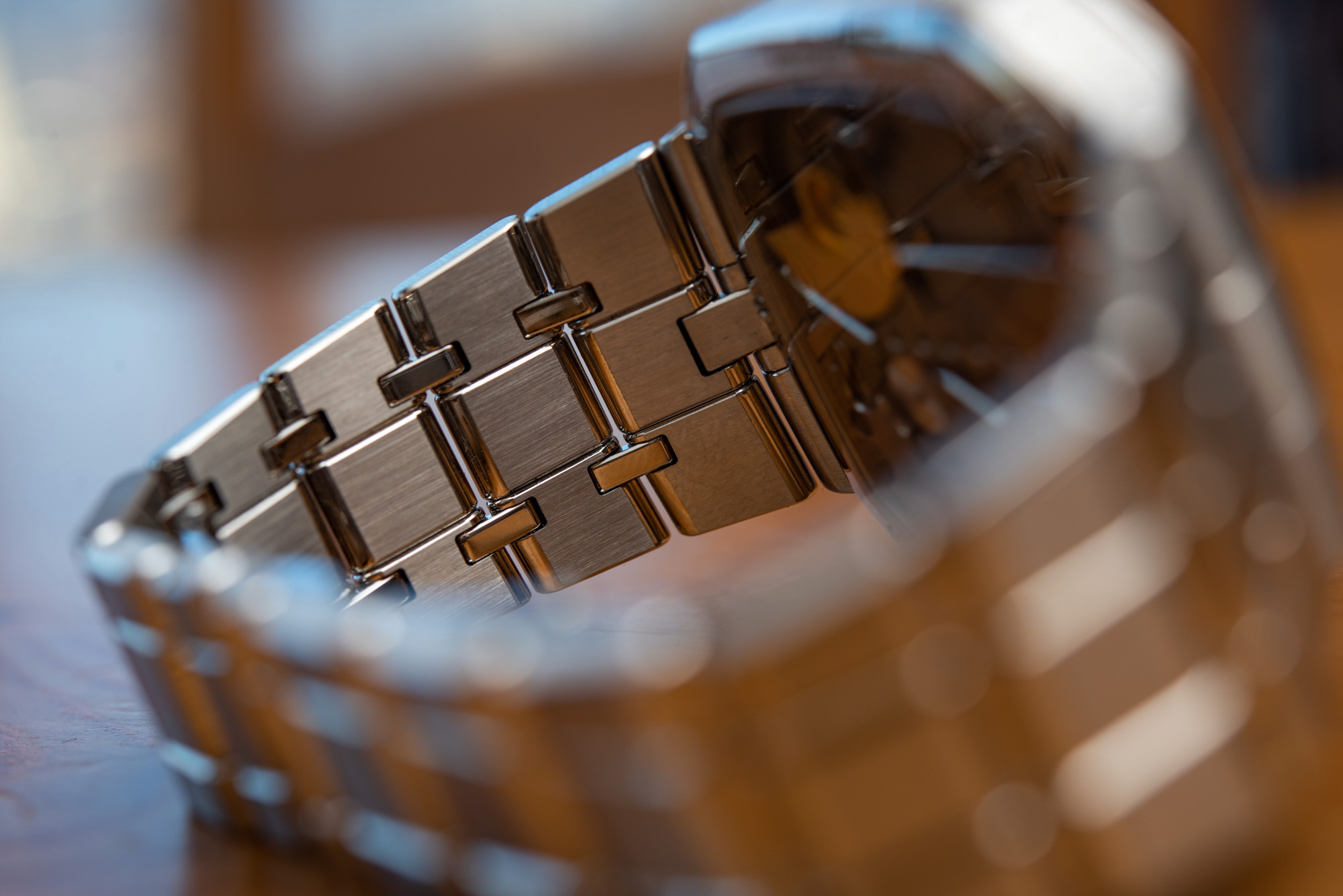
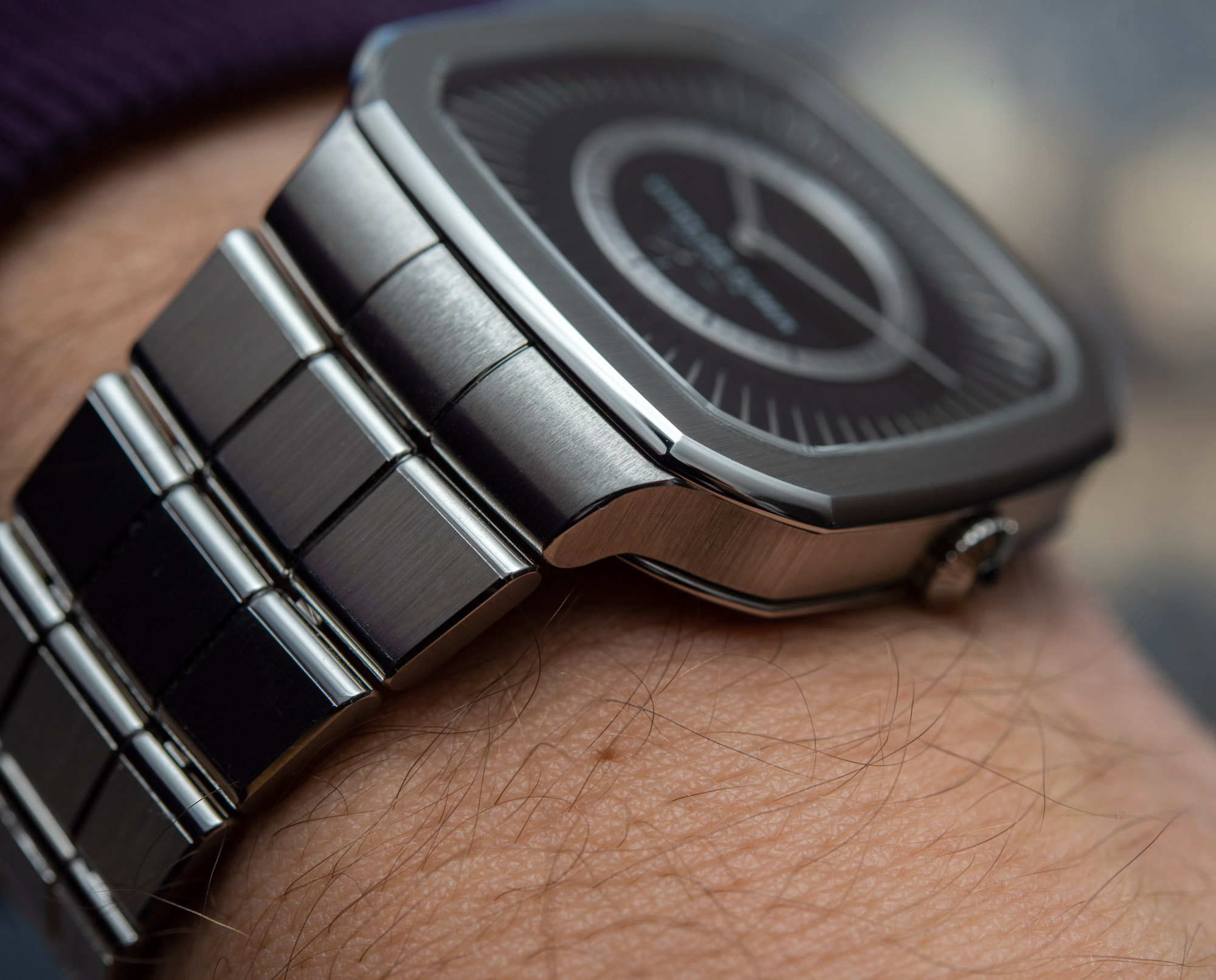
Unless looking at it dead-on from the side, the Perfos case has no straight lines on it anywhere. Instead, is gently curved, but with a noticeable tension. As Jay Leno sometimes says, pointing at a deceptively simple-looking side mirror of an Aston Martin: “Try drawing one of these lines yourself — it’s not as easy as it seems.” Just two types of decoration techniques are to be seen on the surfaces of the stainless steel case: The top of the bezel, the bracelet links, and the profile of the middle case show an extremely delicate brushed treatment that almost appears satin, while the beveled edges of the bezel and bracelet, as well as the entire caseback are brightly and evenly polished. Other than the ever-so-slightly protruding edge of the raised sapphire crystal, every surface and corner of the case is smooth and solid to the touch.
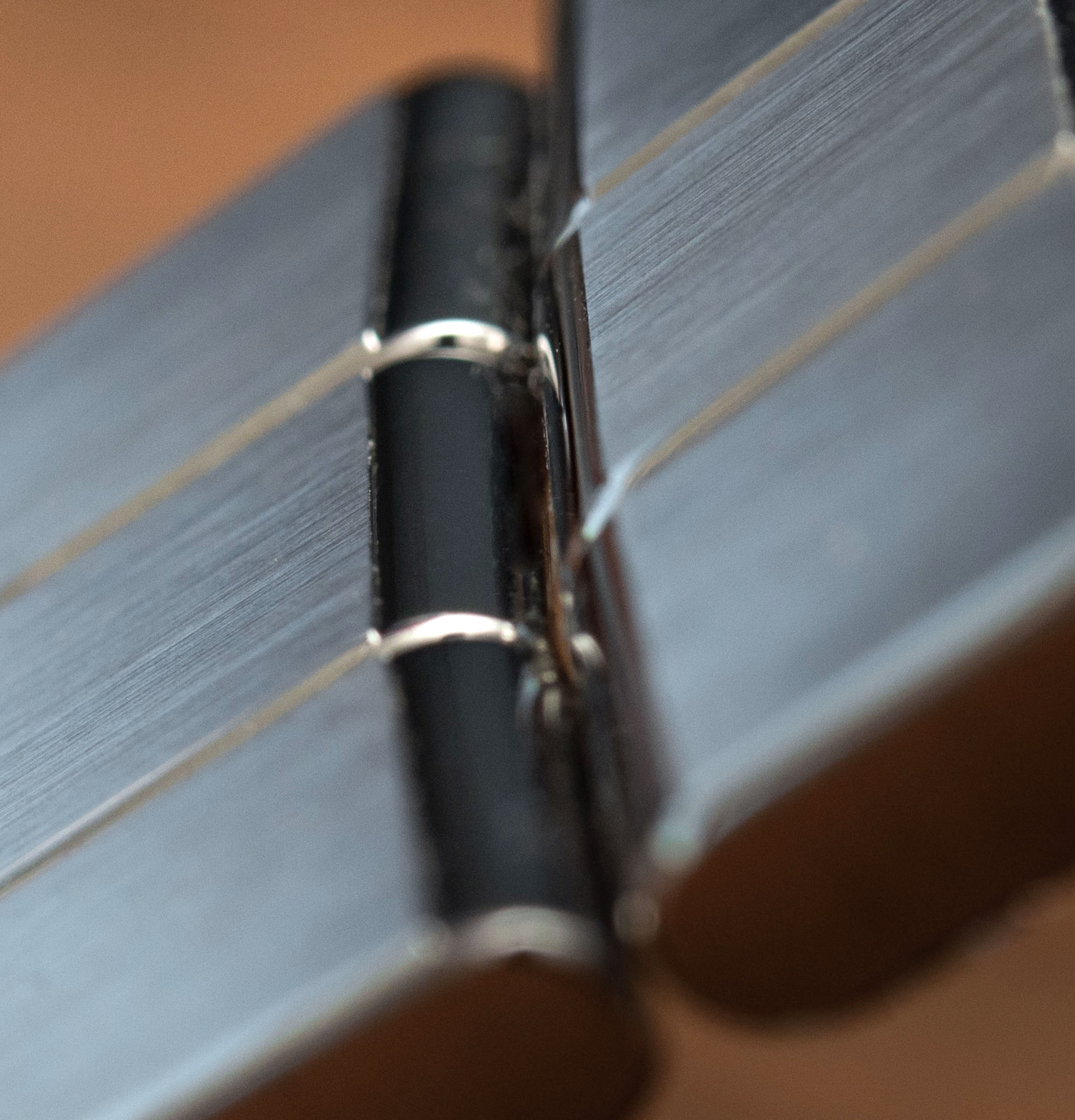

The same cannot be said about the bracelet and its links. In what looks like an unprecedented design decision, the wide, flat top and reverse surface of each link feature what could be best described perhaps as a raised plateau. Every link ends in a perfect, semi-circular polished edge, but the way these meet the flat surfaces is in a distinct step. As you run your fingers lengthwise across the bracelet, from case to clasp, these edges feel sharp to the touch. Although we are talking about what appears to be around 0.5mm in height, they are made with impressive consistency. It is true, with today’s milling techniques, especially those used by Swiss case and bracelet makers in this high-end segment, we have encountered some extremely sharp edges on some very high-end watches — especially on the underside of lugs, or the inside of clasps, for example.
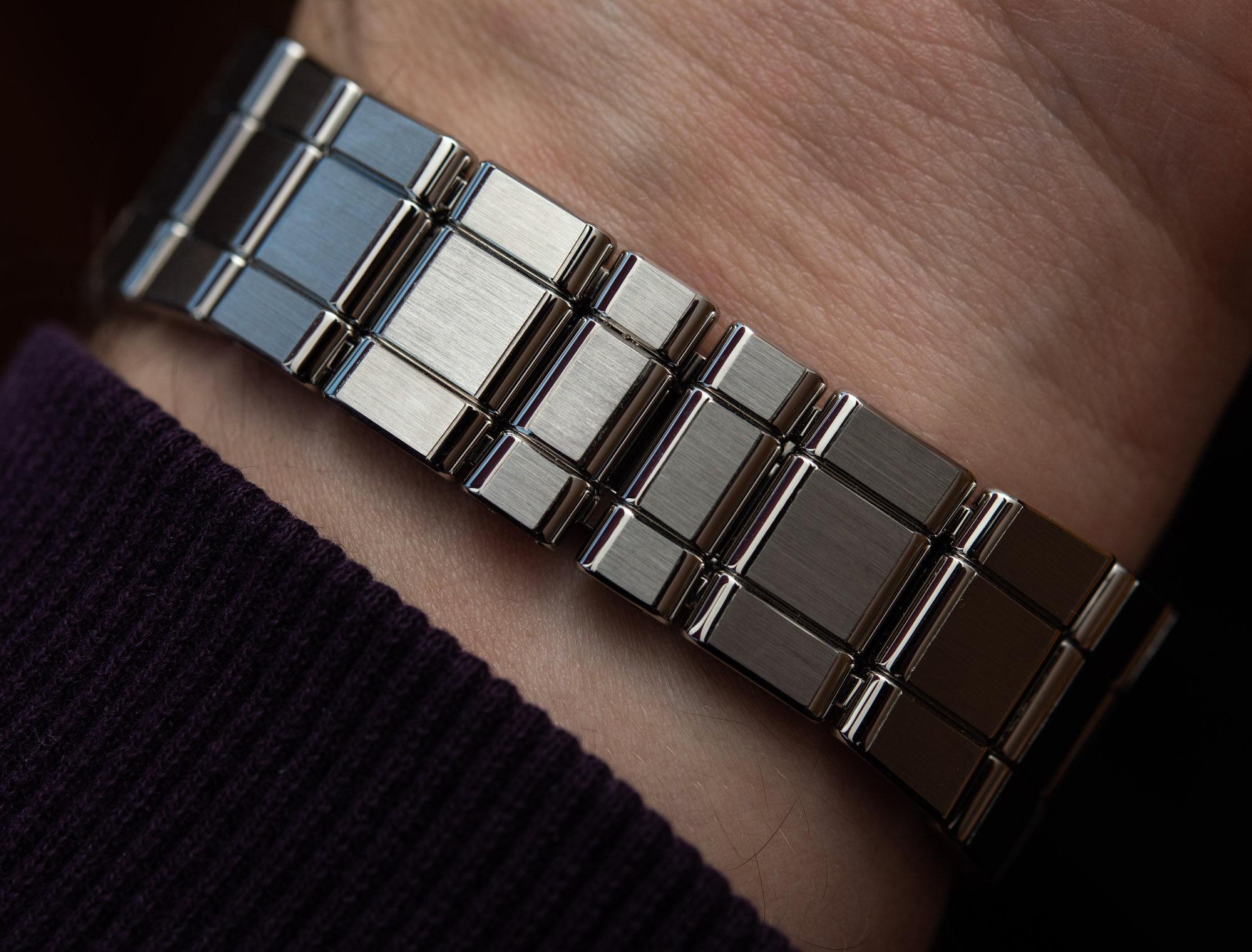
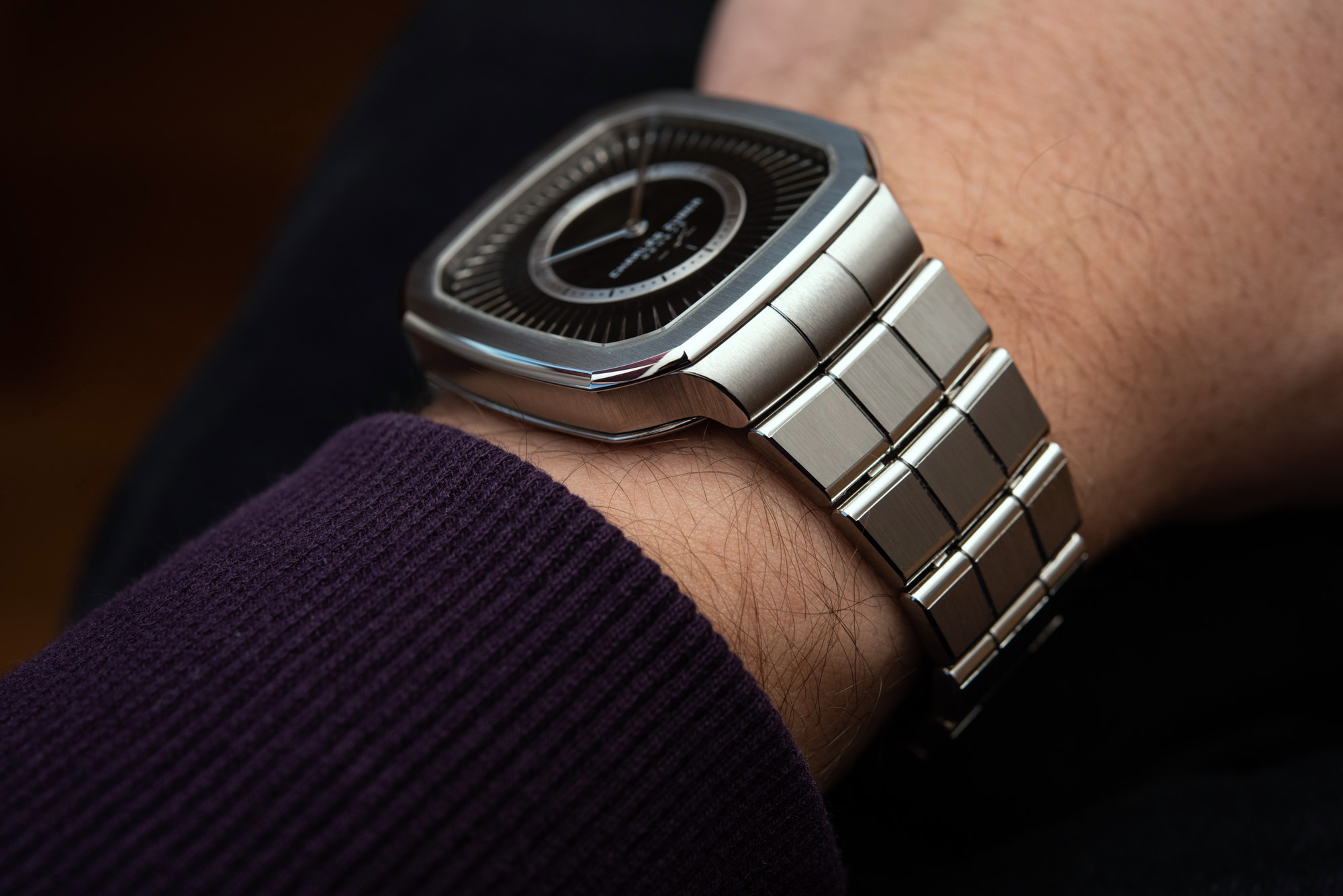
On the wrist, the bracelet of the Charles Zuber Perfos remains very comfortable, and none of these edges can be felt, not even through extensive wear. They are much more prominent with a stroking touch along the top of the links but, in fairness, this is more of an oddity than an outright uncomfortable sensation. It’s never been done before, but we are not sure how much this adds to the tactile or aesthetic values of the bracelet. A quick wrist-roll reveals the positives of the bracelet, as the wide, polished ends of the links and the satin-brushed tops play with light in the way a bracelet on a higher five-figure steel luxury watch should. An interesting element of the design is how the outer links turn upwards, shaping a flat V together with the flat center links. The review piece had a hidden clasp, while the production pieces are said to come with a small appliqué there.
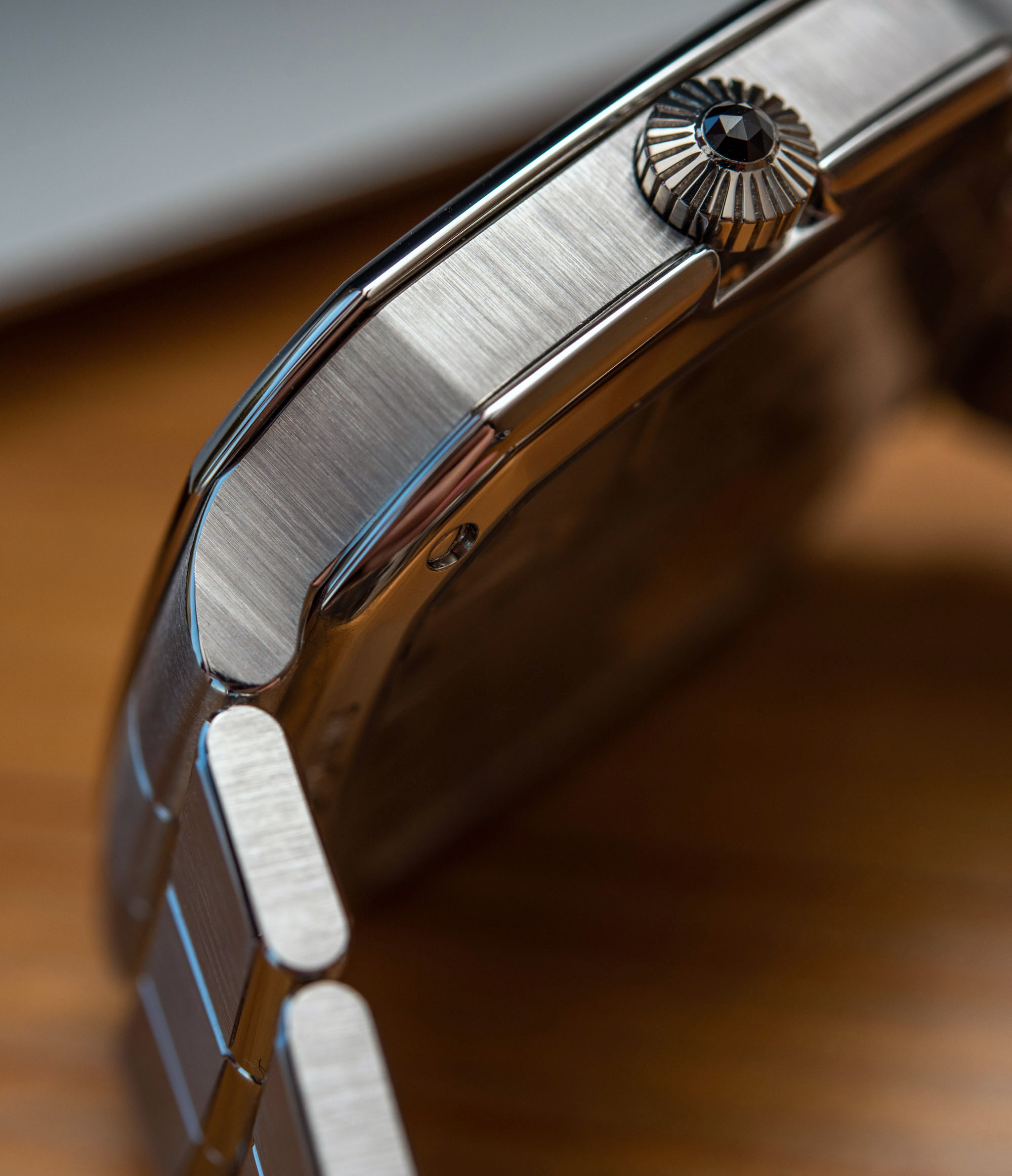
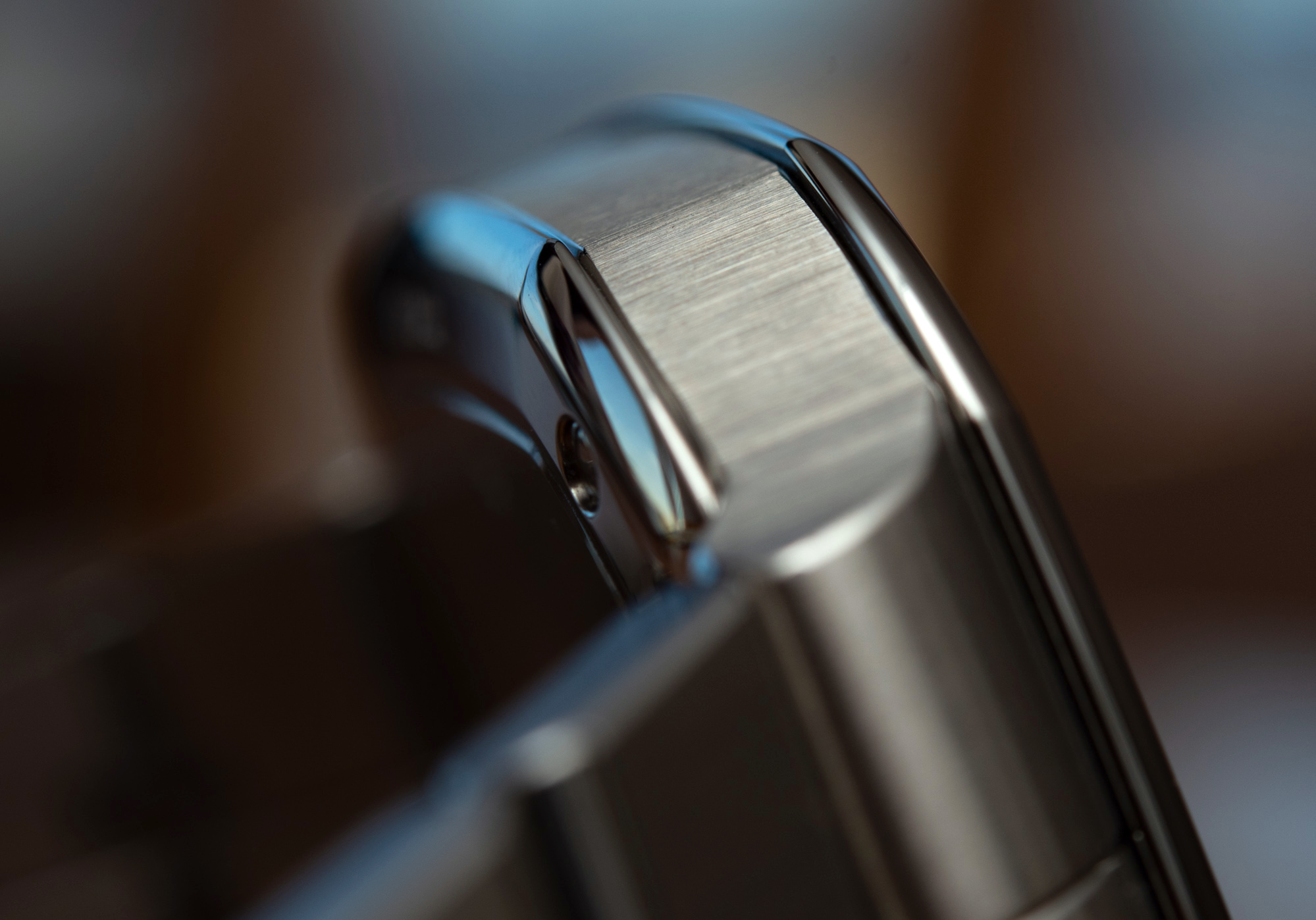
Staying with on-the-wrist impressions, the Perfos watch impresses with a thin profile that, as you might expect by now, comes with its own little twist. Specifically, the bezel and the caseback envelop a recessed case profile. At first, it might appear as though the tolerances were a bit too generous, but of course, that is not the case. This little detail lends the Perfos a more sculpted appearance, one that it can take with ease given the impressively slim 9mm thickness of its case. Overall, the Perfos provides a very pleasant wearing experience during daily wear — too bad it cannot be worn for any form of sports, as its water resistance rating is just 30 meters, which is an important area where it falls short of much of the competition.
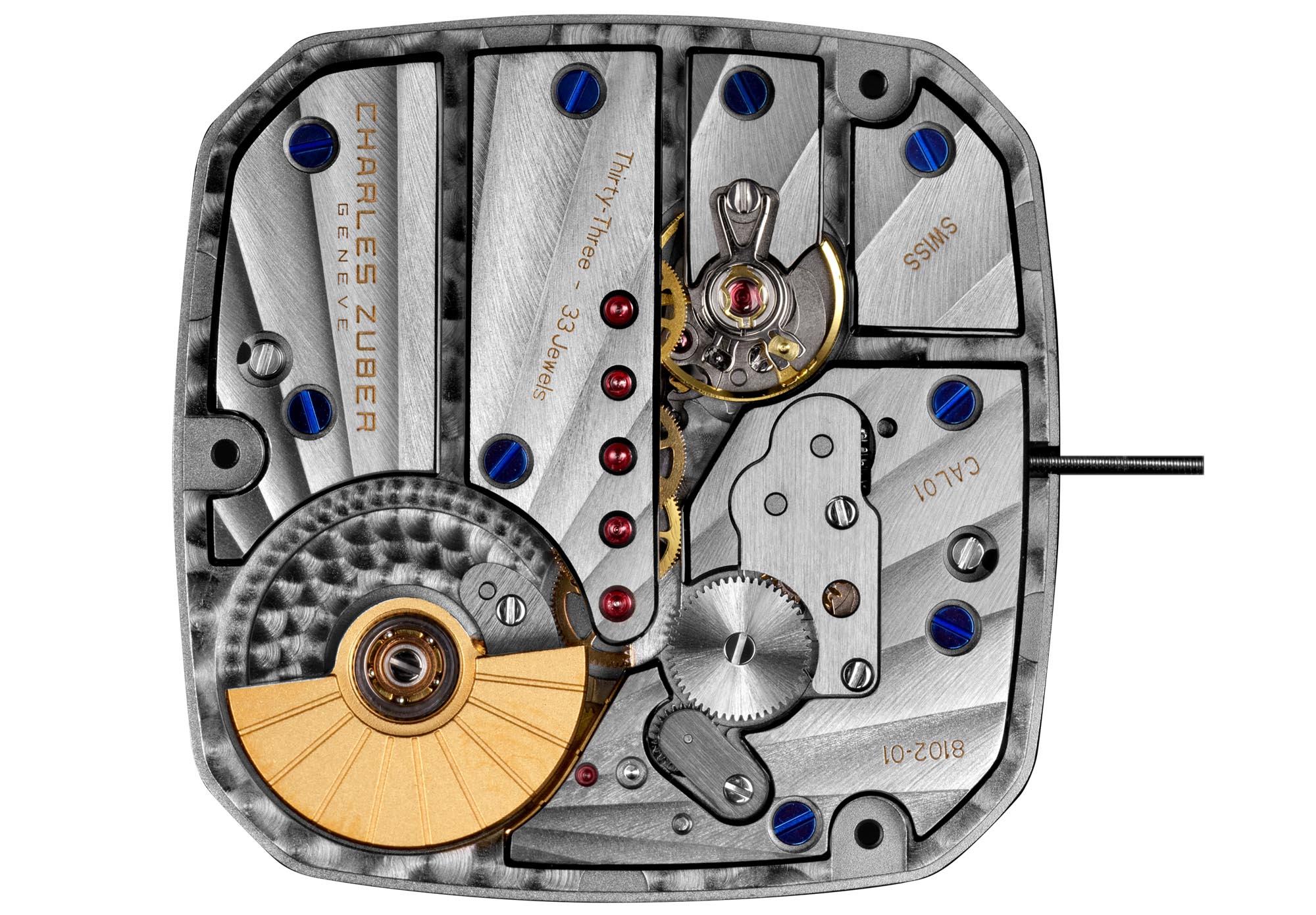
 The movement, developed together with Olivier Mory, is impressively thin, thanks to its micro-rotor construction. Called a “form movement” because it stays true to the shape of the case, the Charles Zuber Caliber 01 operates at a modern 4Hz frequency but combines that with a short 38-hour power reserve — certainly a tradeoff for the thin profile. Comprising 164 components and 33 jewels, it is rhodium-plated in dark gray with blued screws and a rather engaging striped finish that originates from the center of the micro-rotor. Another neat detail is the vertical series of five jewels for the going train, connecting the mainspring barrel with the escapement. Not so impressive is the fine-adjustment system itself; at this price point, a free-sprung balance wheel could reasonably be expected in place of the eccentric screw regulator that’s been used.
The movement, developed together with Olivier Mory, is impressively thin, thanks to its micro-rotor construction. Called a “form movement” because it stays true to the shape of the case, the Charles Zuber Caliber 01 operates at a modern 4Hz frequency but combines that with a short 38-hour power reserve — certainly a tradeoff for the thin profile. Comprising 164 components and 33 jewels, it is rhodium-plated in dark gray with blued screws and a rather engaging striped finish that originates from the center of the micro-rotor. Another neat detail is the vertical series of five jewels for the going train, connecting the mainspring barrel with the escapement. Not so impressive is the fine-adjustment system itself; at this price point, a free-sprung balance wheel could reasonably be expected in place of the eccentric screw regulator that’s been used.
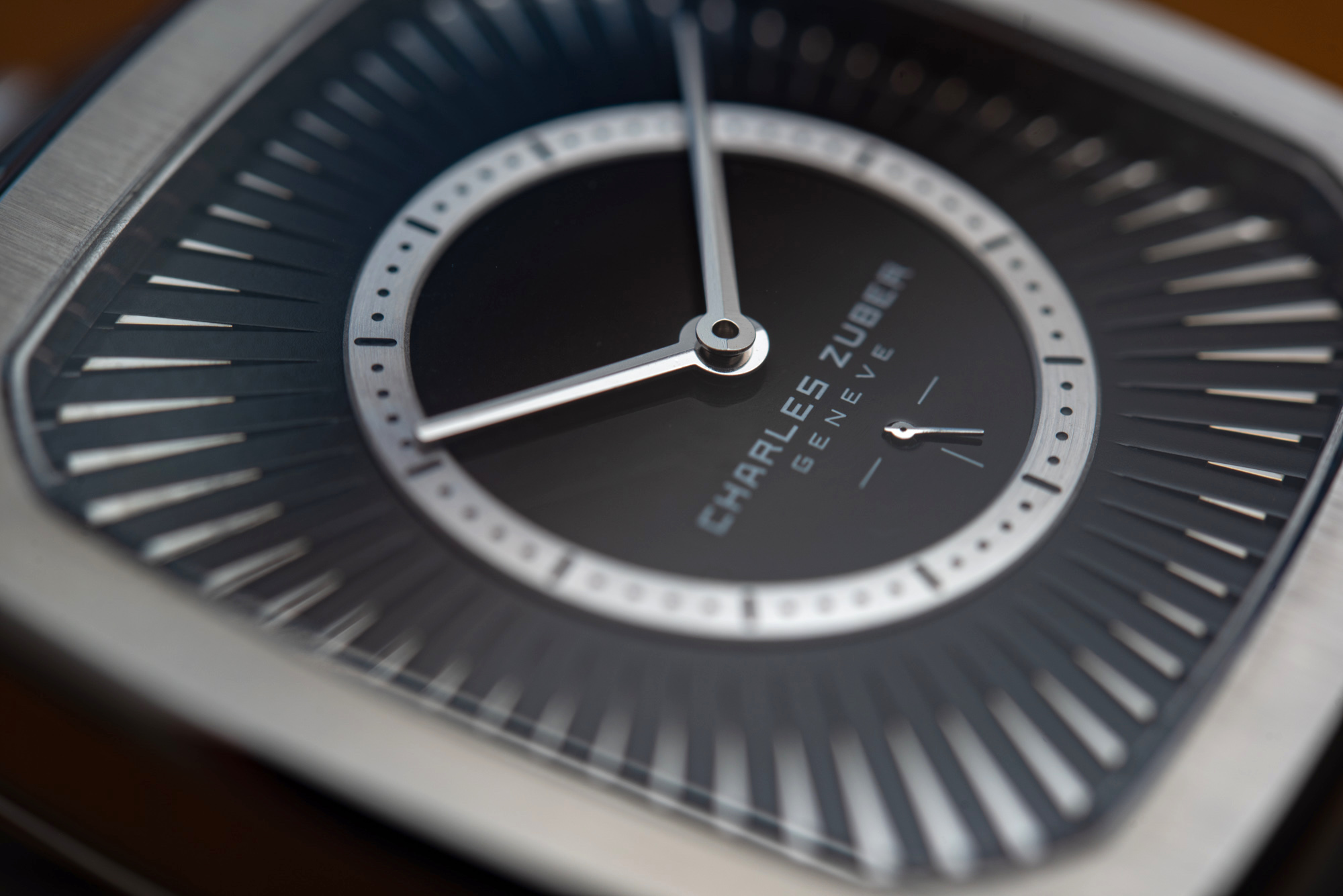 The dial is dominated by the laser-etched louvered design that frames a jet-black center, with a metallic frame in between the two to carry the hour and minute markers. As such, legibility is great, both hands intersect this frame, clearly marking the time. A tiny subsidiary seconds display is just above the 6 o’clock position — pictures hardly do justice to just how petite this display really is. At times one’s eye won’t even pick it up, it is so easily overpowered by the openworked dial frame and the long hands. Speaking of those, the thin and long hands have a delicate bevel running across them, improving legibility by creating a reflective and a dark side that minimizes their tendency to blend into the dark background. A brave move arguably would have been to relegate the Charles Zuber Genève branding to the caseback — everything else about the design is distinctive enough to mark this out as its own. That said, it is true that brands in their infancy like to present their name on the dials for the sake of repetition and recognition. The brand has created a number of different dial colors along with different case sizes, so check out the gallery at the end of the article to see these variations.
The dial is dominated by the laser-etched louvered design that frames a jet-black center, with a metallic frame in between the two to carry the hour and minute markers. As such, legibility is great, both hands intersect this frame, clearly marking the time. A tiny subsidiary seconds display is just above the 6 o’clock position — pictures hardly do justice to just how petite this display really is. At times one’s eye won’t even pick it up, it is so easily overpowered by the openworked dial frame and the long hands. Speaking of those, the thin and long hands have a delicate bevel running across them, improving legibility by creating a reflective and a dark side that minimizes their tendency to blend into the dark background. A brave move arguably would have been to relegate the Charles Zuber Genève branding to the caseback — everything else about the design is distinctive enough to mark this out as its own. That said, it is true that brands in their infancy like to present their name on the dials for the sake of repetition and recognition. The brand has created a number of different dial colors along with different case sizes, so check out the gallery at the end of the article to see these variations.
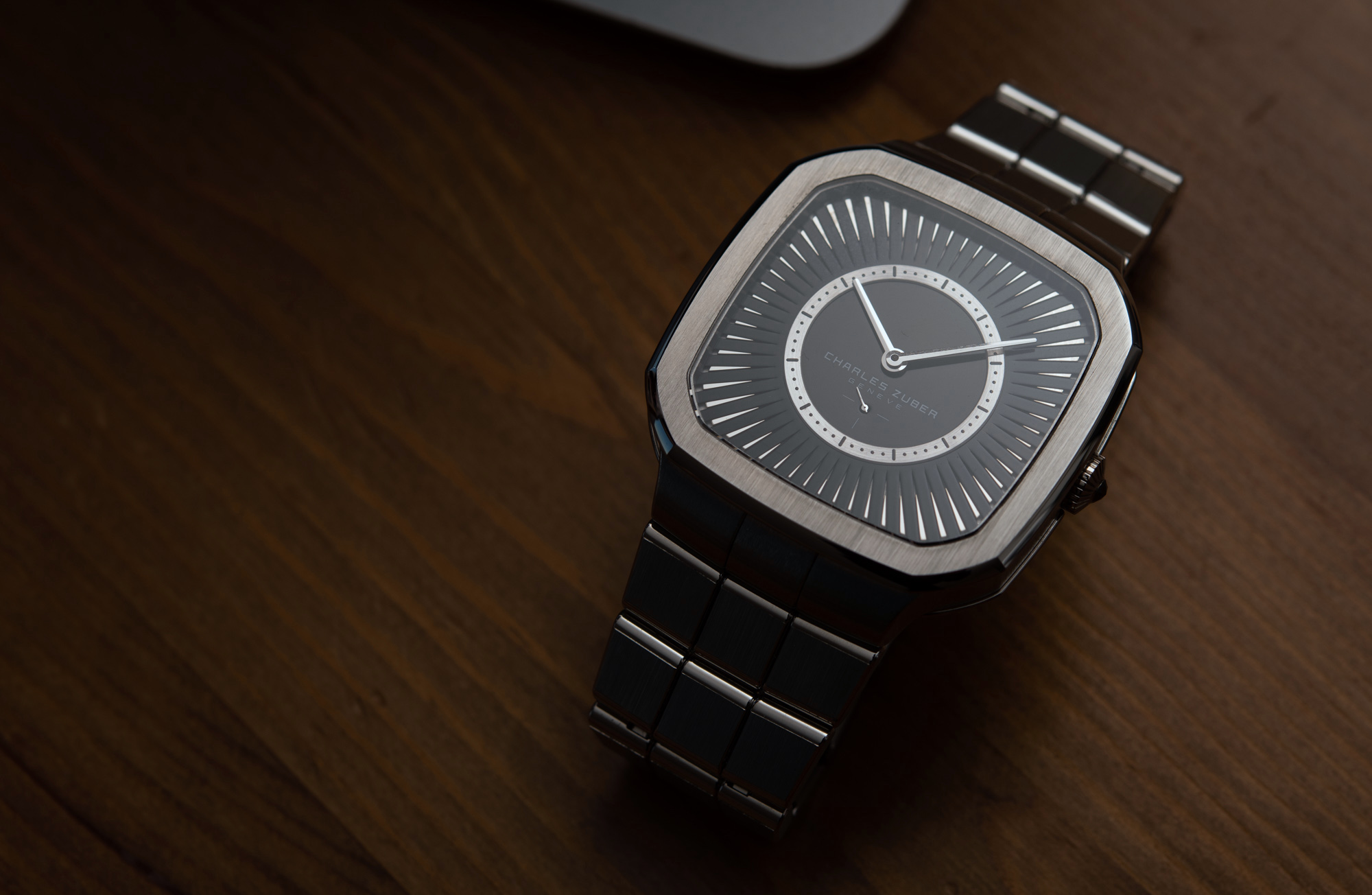
To close on a personal thought: My first impressions of the Charles Zuber Perfos were less than positive. That said, this sensation lined up with some comparable experiences from before, where I had to give the design and the execution some time to grow on me. And so, this is also what I have done with the Perfos. Some of the most enduring designs, those that proved their worth by positively surprising me long down the road, were exactly like this. They slowly grew on me, in stark contrast with some “love at first sight” designs whose appeal was sooner or later lost on me.
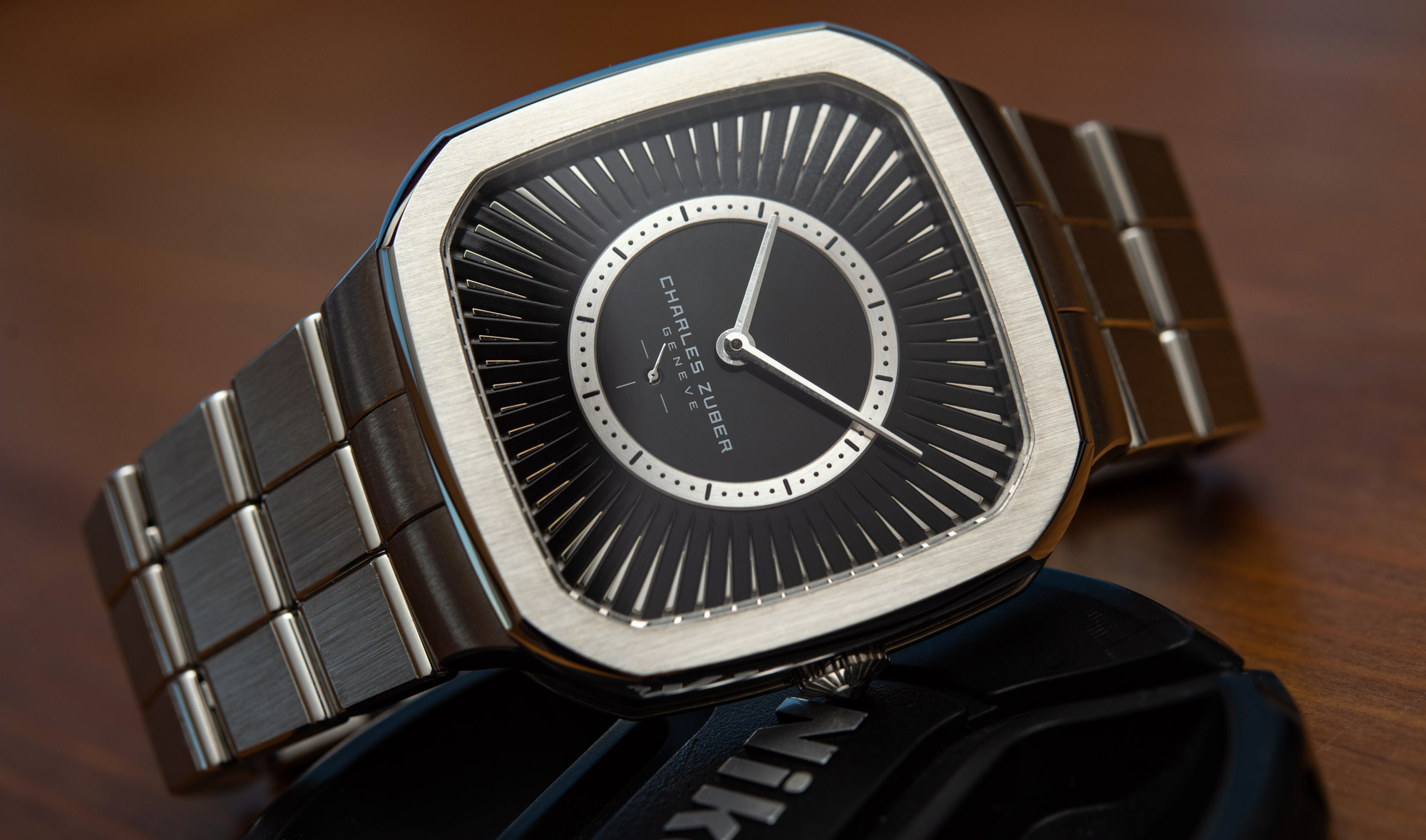
The Charles Zuber Perfos is a rather exotic venture for a host of reasons. First, it’s a new brand, and as such it will have to power through its early introduction phases before it is to reach wider acceptance. Second, it’s a proudly unique design — within the constraints of the trending genre of our time — that must have been costly to develop and produce. Third, all this results in a costly final product, which is likely after those with AP-money burning a hole in their pockets — but AP-retail amounts, and not grey market six-figure sums. For them, the Perfos might be a great way to cure the waiting list itch that also provides a way to project a bit of personality — something that is difficult to say about a Royal Oak or Nautilus anymore. Pricing for the Charles Zuber Perfos ranges from 7,900 CHF for the 36mm version on a leather strap (12,400 CHF on the bracelet) through a 39mm titanium version on leather at 18,800 CHF to the 42mm version on a bracelet at 24,500 CHF. The Charles Zuber Perfos watch as reviewed here costs 22,800 CHF. You can learn more at the brand’s website.


